Undavalli is located six kilometers away from Vijayawada and around 22 kms north-west of Guntur. . This is in the southwest direction of Vijayawada. Undavalli is in Tadepalli Mandal of Guntur district. This is one of the ancient and historical villages in Andhra Pradesh.
What to see in Undavalli
Undavalli Caves: The caves have four storeys. These caves were used as restrooms by Buddhist monks in rainy season. River Krishna appears beautifully from this hill. We can see the caves here that are believed to be built by Vishnukundina kings during the period of 420 – 620 AD. These caves are hewn out of rocks. The architecture and the sculptures of the cave temple, attract the tourists.
Sri Anantha Padmanabha Swamy temple is the special attraction of Undavalli Caves. There is a big statue of Ananatasayana Vishnu in reclining position made out of single block of black granite. There are temples of other deities also in the rock cut caves.
What to see around Undavalli
Guntur: Guntur is 22 kms away from Undavalli caves. There are many attractions such as temples, parks and churches in Guntur.
Amaravathi: this is 16 miles away from Guntur and is one of the popular religious places and also Buddhist destination. There is a temple dedicated to Lord Shiva here.
Bhattiprolu: this is 20 kms away from Guntur and this is also one of the popular Buddhist destinations.
Vijayawada: This is one of the largest cites of Andhra Pradesh and there are many tourist interests in this city such as Gandhi Hill, Kanaka Durga Temple, Bhavani Island, Kondapalli Fort and many more.
Getting to Undavalli: Number of buses run to Vijayawada and Guntur cities from all corners of Andhra Pradesh and from here local transport can be hired to reach Undavalli. Vijayawada is also well connected by train and aeroplane. Another way to reach Undavalli is to get into a bus from Mangalagiri.
Getting Around Undavalli: Local transport can be hired to look around Undavalli. Tourists also prefer to walk to enjoy the nature here. We can see large numbers of them walking on the Shore of Krishna River.
Best Time to visit Undavalli: The climate here is pleasant in winter but very hot in summer season. Best time to visit the place is between October and February.
Where to stay at Undavalli: Though Undavalli is located in Guntur district, the village is very near to Vijayawada. Vijayawada has many hotels from five star hotels to budget hotels to suit the needs of every tourist.
Where to eat at Undavalli: Tourists prefer eating at Vijayawada as Undavalli is a small village and there are not many hotels that offer decent food. Vijayawada is known for its special Andhra Cuisine including the spicy pickles and veg and non veg varieties. There are many restaurants that offer delicious food.
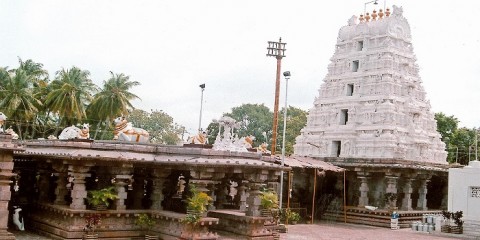
AP, South India, Architecture, Boating, Caves, History, Jyothirlinga, Mahabharata, Shakti peethas, Temple
Srisailam is located in Nallamala hills in Kurnool district, Andhra Pradesh, India. It is a popular weekend destination among the people. Major attraction of this place is Bhramaramba Mallikarjuna Swamy Temple. Other name of Srisailam is Srigiri, Sriparvata, and Mantharaparvata. In the epic Mahabharata, Srisailam was mentioned with the name Sri Parvata. Glory of Srisailam dates back to 12th century. At that time this place was famous for Vachana Sahitya and Sharana Movement. Adi Sankara visited this place. It is believed that Akka Mahadevi gained salvation in the caves of Srisailam. He was a Social reformer and Poet. Wildlife sanctuary is other attraction of this place.
What to see at Srisailam:
Srisailam Dam: It was constructed across River Krishna. Length of the dam is 512 meters. It is considered as one of the largest hydroelectricity power projects in India. This consists of 12 radial gate ways.
Mallikarjuna Swamy Temple: This is the major attraction of this place. King Harihara Raya built this temple around 6 centuries ago. It is one of the 12 Jyothirlingas in India. Lord Mallikarjuna is worshipped here. Vijayanagar Architecture style can be seen here. In Skandhapurana, Vyasa Maharshri discussed about this temple in detail.
Bhramaramba Devi Temple: Goddess Bhramaramba Devi is worshipped here. She is the incarnation of Goddess Parvati. It is the seat of Ashtadasa Mahasakthi Pithas. It is believed that this is the first sakthi of 18 sakthi Peethas. Temple is situated on the banks of River Krishna.
Hemareddy Mallareddy Temple: It is located half kilometre away from Mallikarjuna Temple. In 2010, it was constructed by Karnataka Veerashaiva Reddy Samaj. Adjacent to the temple an ashram can be seen.
Srisailam Sanctuary: This is other major attraction of this place. Area covered by this sanctuary is 3568Sq.Kms. Large variety of animals such as Pangolin, Jungle cat, Palm Civet, Sloth bear, Tiger, deer; Leopard etc can be seen here. It is dry delicious forest consists of Scrubs and bamboo thickets. Several Crocodiles are situated at down water of Srisailam dam.
Shikareswara Temple: It is believed that deity at this temple has a power to eradicate sins of the devotees. This temple is located at highest point of Srisailam. Best view of the town is possible from here.
Hathakesvara Temple: At this place Sri Sacharacharya wrote one of his Philosophical treaties. Lord Shiva idol is worshipped here.
Shakti Ganapati Temple: Lord Ganapati is worshipped here.
Srisailam Ropeway: It is located 1kms distance from Mallikarjuna temple. Pathala Ganga is a sacred place at back waters of River Krishna. To reach Pathala Ganga, visitors need to trek down around 500 steps from hanuman Temple. Ropeway is operating from Haritha Hotel to Pathala Ganga.
What to see around Srisailam:
Akka Mahadevi Caves: It is located 44kms away from Srisailam. In this dark deep end caves natural Shivalinga can be seen. Motor boats are used to reach this place. It is believed that Akka Mahadevi did penance at this place. Visitors reach this place through Ropeway.
Mallela Theertham: It is located at 50kms away from Srisailam. This is the location of waterfalls. Visitors can reach the waterfalls after availing the muddy bumy road and 250 steps down the valley.
Getting to Srisailam: Srisailam is well connected with road. From Bangalore, Visakhapatnam, Vijayawada, Pune, Jaipur etc buses come to this place. Srisailam do not have railway station. Nearest railway station is located at Kurnool which is 97kms away from Srisailam. Nearest airport is located at Hyderabad which is 232 kms away from Srisailam.
Getting around Srisailam: Taxis, Autos, Buses are available to visit the surrounding places of Srisailam.
Best time to visit Srisailam: Best time to visit Srisailam is in February, October, November and December.
Where to stay in Srisailam: Plenty of accommodations are available at this place including luxury hotels. Best hotels at this place are Punnami Srisailam, Haritha Srisailam, Gowri Sadan, Grand Akka Mahadevi Hotel, Akhila Bharata Redla Satram, Pathaleswara Sadanam.
Where to eat in Srisailam: Large number of restaurants is available at this place. Only vegetarian food is available at this place.
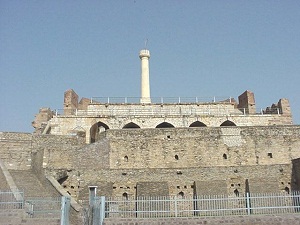
AP, South India, Architecture, Caves, History, Jyothirlinga, Temple, Wildlife Sanctuary
Kurnool District is located in Andhra Pradesh, India. Name of this place is named after the Telugu word Kandanavolu. It is the gateway to Rayalaseema. Between 1st October 1953 to 31st October 1956 this place acted as capital of Andhra Pradesh. This place is having archaeological significance. This is situated on the banks of River Tungabhadra and Handri. Sri Krishnadevaraya , Hindu King, influence is more at this place. Aurangazeb and Nizams also ruled this place. After independence Kurnool city was first ruled by Alaf Khan Bahadur.
What to see at Kurnool:
Birla Mandir: It is located on the hill named Naubath Pahad. Lord Venkateswara is worshipped here. From this temple complex, visitors can see the temple of Birla Mandir of Secunderabad.
Srisailam Dam: Construction of this dam started in 1960 completed in 1981. It is one of the 12 largest hydroelectric Projects of India. Dam was built on River Krishna.
Belum Caves: These are situated in Belum village of Kurnool. In India these caves are 2nd largest caves. Natural art work can be seen here at these caves. Major attractions of these caves are Banyan tree, Meditation Hall, Mandapam, Patalaganga, simhadwaram, Musical Chamber.
Mahanandi : Major attraction of this village is Mahanandiswara Swamy Temple. Temple is dates back to Chalukyan Period. Lord Mahanandiswara, who was the incarnation of Lord Shiva, is worshipped here. It is one of the 9 Nandi’s.
Bharmaramba Mallikarjuna Swamy Temple: It is situated in Srisalam. Lord Mallikarjuna incarnation of Lord Shiva is worshipped here. Bhramara means bee. It is believed that Goddess Parvati Worships Lord Mallikarjuna in the form of bee. It is one of the 12 jyothirlinga temple.
Rollapadu Bird Sanctuary: It is dry thorny forest. This is covered with groundnut, cereal crops, Castor and Cotton. Major attractions of this place are Indian bustards, Indian cobras, wolves, Jackals etc.
Saibaba Temple: In India this one of the biggest saibaba’s temples. Marble stone used for the idol of Saibaba. Temple is having the meditation hall having the capacity of 800 devotees.
Nallamala hills: It is the part of Eastern Ghats. These hills cover Mahabubnagar, Prakasam, Kurnool, Kadapa, Guntur districts. Near this hill Nagarjunasagar Srisailam Sanctuary is located.
Gundla Brahmeswaram Wildlife sanctuary: This sanctuary situated in both Prakasam and Kurnool districts. May and October are the best times to see this place. Major attractions are Pythons, Chinkara, Panthers etc.
Other attractions of Kurnool: Other attractions of Kurnool are Nagarjuna Srisailam Sanctuary, Kurnool Fort, Peta Anjaneyaswami Temple, Yaganti Shiva Temple, Tomb of Abdul Wahab, Adoni.
What to see around Kurnool:
Prakasam: construction of several stupas can be seen here ad Buddhism flourish in this region. Several kings such as Mauryas, Qutub Shahis, Vijayanagar Kings ruled this place. Major attractions of this district are Singarayakonda, Chirala, Motupalli, Chandavaram, Tripuantakam, Markapur etc.
Anantapur: It is other boundary of Kurnool district. Major attractions of this district are Penna Ahobilam, Veerabhadra Temple, Bugga Ramalingeswara Swami temple, Penukonda Fort, Raidurga fort, Sri Kadiri Lakshmi Narayana temple, Ravadurg Gooty Fort.
Getting to Kurnool: Kurnool is well connected with road and railways. From Hyderabad, Chitoor, Anantapur etc buses come to this place. Kurnool railways are well connected with all the major cities. Nearest airport is located at Hyderabad.
Getting around Kurnool: Autos, Taxis, buses are available to visit the surrounding places of Kurnool.
Best time to vast Kurnool: Best time to visit this place is between February and December.
Where to stay at Kurnool: Plenty of accommodations are available to stay at this place including luxury hotels. Best hotels are Rajshri Hotel, Rajasthan hotel, Rajhans International, Bhavana International.
Where to eat in Kurnool: Eateries and restaurants are plenty at this place. This place is well known for non vegetarian food.
Vijayawada is a city in Andhra Pradesh, India. Other name of this place is Bezawada. In 639 there was a Buddhist Monastery. At this monastery Chinese Pilgrim Hiuen Tsang stayed here. During 7th century of Eastern Chaulukya there are 5 rock cut temples at this place.
What to see in Vijayawada:
Kanaka Durga Temple: This is the major attraction of this place. It is located on Indrakiladri Temple. Goddess Kanaka Durga is worshipped here. According to Hindu Mythology, King Arjun attained Pasupatha astra at this place. After attaining astra he constructed this temple. As per Veda this was Swayambhu Temple.
Bhavani Island: This is the best recreation spot at this place. This Island is one of the largest river Islands. Major attractions of this place are Manicured gardens, mangroves and Boating.
Prakasham barrage: Tourists who visits this place can have the best view of Krishna River. This barrage connect Krishna and Guntur district. Construction of this barrage started in 1852 ended in 1855.
Besant Road: This is the best place for shopping lovers. Modern eateries, restaurants, cinema halls can be seen here.
Mogalarajapuram Caves: These are famous for 5 rock cut sanctuaries. Sanctuaries dates back to 5th century.
Gundala Matha Shrine: This shrine is well known as Mary Matha Shrine. It is located on the top of the hill. Annual Feast of Our Lady of Lourdes celebrates so grandly at this place. This church consists of a museum. Collection of holy relic’s dates back to ancient period can be seen at this museum.
Lenin Statue: This statue symbolises the ideology of communism. Major attraction of this place is 25years old statue of Karl Marks.
Other attractions of Vijayawada: Other attractions of Vijayawada are Sri Nagarala Sri Maha Lakshmi Ammavaru Temple, Rajiv Gandhi Park, Marataka Rajarajeswari Temple, Gandhi Hill, Victoria Museum.
What to see around Vijayawada:
Undavalli Caves: These caves are located in Undavalli which is 9kms away from Vijayawada. These caves belong to 4th and 5th century. Of all the caves, largest cave is 4 storied. At this cave single block of Granite statue of Lord Vishnu can be seen here.
Kondapalli Fort: It is located 22kms away from Vijayawada in Kondapalli village. Tanisha Mahal is the major attraction of this fort. There are 3 entry gates to this fort.
Kondapalli Forest: It is located 32kms away from Vijayawada. Major attractions of this place are Wolves, Wild Boar, Jackals, Wild dogs, Leopards etc.
Mangalagiri: It is located 15kms away from Vijayawada. This place is one of the 8 important Mahashetrams in India. Major attraction of this place is Sri Laxmi Narasimha Swamy Temple. It is the oldest Vaishnavite Temple in entire south India.
Amaravati: it is located 38kms from this city. This place is famous for Amareswara Temple. Temple is dedicated to Lord Shiva. At this place great Buddhist Stupa of Pre- Mauryan time. Other attraction of this place is Mahachaitya Stupa.
Getting to Vijayawada: Vijayawada is well connected with road, railways and airways. From all the major cities such as Hyderabad, Chennai, Tirupati, Chitoor, etc buses come to this place. Vijayawada is one of the major railway heads. From all the major cities trains come to this place. Airport is located 20kms away from city centre at Gannavaram. This airport is well connected to Hyderabad and Vishakhapatnam.
Getting around Vijayawada: Buses, Autos are available to visit the places of Vijayawada. Buses and Private vehicles are available to visit the surrounding places of Vijayawada.
Best time to visit Vijayawada: Best time to visit this place is between October to March. Summer at this place is too hot.
Where to stay in Vijayawada: Plenty of hotels including luxury hotels are available to stay at Vijayawada. Apart from Hotels, resorts are also available to stay. Best hotels at this place are Haailand Resort, Continental Park Hotel, Manorama Hotel, Ilapuram Hotel.
Where to eat in Vijayawada: Plenty of restaurants are available to eat in Vijayawada. Best restaurants at this place are lotus Food City, Cross Roads, Sree Lakshmi Vilas Modern Cafe, Minerva Coffee shop.
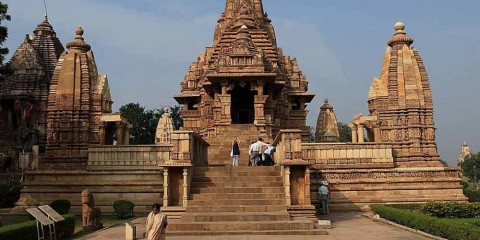
Bihar, North India, Caves, Fort, History, Hot Springs, Musuem, Nature, Temple, Valley, Wildlife Sanctuary
Bihar is 12th largest state in India. In Bihar, Lord Buddha Founded Buddhism. Lord Buddha spent most of his life time at this place. Mahatma Gandhi Setu is one of the longest bridges in the world.
What to see at Bihar:
Patna: It is the capital of Bihar which is situated on the southern banks of Ganges. Mahatma Gandhi Setu Bridge is located here. History of Patna dates back to 493 BC. Magadha Empire ruled at this place. Major attractions of Patna are Agam kuan, Har Mandir, Padri Ki Haveli, Patna Cementry, Golgarh, Patna Museum etc.
Munger: Major attractions of this place are Bihar school of Yoga, Madras Rahmania Islamic School.
Rajgir: This place is famous for several temples and monasteries. This place is associated with Lord Buddha. Jivekarmavan Monastery was the residence of Lord Buddha. This place is well known for hot water springs and Jain temples. Other attractions of this place are Venue Vana, Jarasandha’s Akhara, Ajatshatru’s Fort, Bimbisar’s jail.
Nalanda: Nalanda Attractions are Nalanda University, The Great Stupa, Nalanda Archaeological Museum, Hieun Tsang Memorial Hall.
Sasaram: Sasaram Attractions are Sher Shah Suri’s Tomb, Maa Tara Chandi Temple, Rock Cut Caves and Ashokan inscriptions.
Bihar Sharif: It is situated on the banks of River Panchanan. Plenty of pilgrim Muslim tombs can be seen here. It was served as capital of Pala dynasty. 5th century Muslim tombs, mosques and Gupta Pillar can be seen here. Major attractions of this place are Odantapuri, Tomb of Malik Ibrahim Vaya, Makhdum Shah Sharif ud din Mosque, Saint Mallik Ibrahim Bayu.
Muzaffarpur: Major attractions of this place are Sikandarpur Kali Temple, Baba Garib Stan, Rajeshwari Devi Temple, Ram Chandra Shahi museum etc
Bhagalpur: During 7th century it was the biggest trading market. Major attractions of this place are production of silk fabrics, Madhusudan temple, Colganj Temple.
Gaya: It is one of the tourist’s places of Bihar. This is the sacred place to Hindus. It is believed that at this place Lord Vishnu kept his foot on demon Gayasur to kill him.
Bodhgaya: Lord Buddha got enlightenment at this place. After the enlightenment of 250 years, Emperor Ashoka came to this place and founded Mahabodhi Temple.
What to see around Bihar:
Uttar Pradesh: It is the holy land of Rishikesh, Kedarnath, Badrinath, Haridwar. Tales of Rani of Jhansi is most famous. Major attractions of this place are Taj Mahal, Agra, Allahabad, Ayodhya, Corbett, Gangotri, Lucknow, Mussorie.
Madhya Pradesh: It is the largest state in India. At these place more than 1800 monuments says the stories of musicians, poets, saints, warriors, kingdoms, Empires of centuries old. Major attractions of this place are Bandhavgarh, Amarkantak, Bhojpur, Bhopal, Dhar, Chitrakoot, Chanderi, Gwalior, Indore, Jabalpur etc.
Orissa: Major attractions of this place are Konark, Gopalapur, Cuttack, Chilka Lake, Bhubaneshwar, Berhampur, Puri.
West Bengal: Major attractions of this place are Sunderbans, Shanti Niketan, Diamond Harbour, Siliguri, Darjiling, Calcutta, Bakreshwar.
Sikkim: Major attractions of this place are Yuksom, Lachung, Gangtok.
Getting to Bihar: Bihar is well connected with road ways, railways and airways. Some of the railway stations in Bihar are Abhaipur, Bansipur, Bhagwanpur, Chhapra, Labha, Tilaya, Wena, Sarai, Ismailpur etc. Airports in Bihar are Birsa Munda, Bokaro, Daltonganj, Darbhanga, Dhanbad, Gaya, Giridih, Jamshedpur, Madhubani, Muzaffarpur, Purnea, Raxaul etc.
Getting around Bihar: Buses and Taxis are available to visit the places of Bihar. Trains, buses and Taxis are available to visit the surrounding places of Bihar.
Best time to visit Bihar: Bihar welcomes the tourists throughout the year.
Where to stay in Bihar: Plenty of accommodations are available to stay at various places of Bihar. Starting from Budget to Luxury hotels are available to stay at Bihar.
here to eat in Bihar: Plenty of restaurants are available to have food in Bihar. Major restaurants of Bihar are Bell pepper, Tan door Hut, Takshila, Siam Thai restaurants.

HP, North India, Buddhist Monestery, Buddhist Stupas, Buddhist temples, Caves, History, Lahaul and Spiti district, Nature, Temple, Trekking
Tabo Monastery is located in Tago village of Spiti Valley, Himachal Pradesh, India. In the Tibetan Era Fire Ape, this monastery was founded. This monastery is famous for murals, frescos, statues, stupas, manuscripts and Thankas. It was reconstructed after the earthquake of 1975.
What to see in Tabo Monastery:
Architecture: Tabo Monastery consists of cave Shrines, 4 decorated stupas, and 9 temples. Temples belongs to 15th to 20th centuries, Stupas belongs to 13th to 14th centuries and Paintings of the main temple 10th to 11th centuries. Huge collection of Pramana and manuscripts texts can be seen at this monastery. These belong to 1991 to 1998.
Main Temple: Main temple consists of entry hall and assembly hall. Entry hall has pictures of Yeshe O’d and his two sons Devaraja and Nagaraja. They were the founders of this monastery. In the main temple, visitors can see 110 cm height Vairocana. Painted decorations of sculptures can be seen here. On the walls of the main temple scriptures written on wooden planks can be seen here. More than 50 clay images are located here.
Older Temples: Golden temple is said to be covered with Gold. In 16th century it was renovated by Sengge Namgyal. Other ancient temple of this monastery is Bodhisattva Maitreya temple. Height of this main statue of this temple is 6meters. Other attraction among the old temples is Trom ton Temple. Murals of eight medicine Buddhas can be seen here. Paintings are the major attraction of interiors of Small Trom- ton.
Newer Temple: Largest newer temple of this complex is Temple of Dromton. This temple is famous for paintings. Other main temple among new temples is Mahakala Vajra Bhairava Temple. There are 5 temples in this monastery.
Stupas: Temple complex consists of several stupas. Four stupas are most attractive with interior paintings. These stupas belong to 13th century.
What to see around Tabo Monastery:
Ki Monastery: In the Spiti Valley this is the largest monastery. This monastery is famous for wind instruments, stucco images, rare manuscripts, thangkas, and murals. This monastery is dates back to 1000 years. This is the best place for Pasada Style of architecture. It consists of 3 floors. Small rooms in the monastery are allotted to monks. Underground is used as storage and Ground Floor is used as assembly hall.
Kaza: It is the base point for trekking. Places to visit in Kaza are Hikkim Monastery and Sa Kya Pa Sect monastery.
Dhankar: Main intension to build this fort is to keep an eye on enemies and enjoy the Spiti Valley by seeing from this place. Old temple in Dhankar is known as Lha O Pa Gompa.
Pin Valley: It is located on the banks of river Pin. Major activities in this place are archery competitions and Horse racing. Most of the tourists attracts towards Chamurti Horses. It is a part of Spiti Valley.
Kunzam Pass: Height is 4590 meters above the sea level. It is the gateway to Spiti Valley. It offers best view of Shigri Parbat.
Langza: Langza is known as maritime fossils.
Kibber: Lush Green fields and agricultural forms are abundant. Major crops are Peas and Barley. This place is famous for monasteries, barren splendour, and scenic mountains. Plenty of fossils present in and around Kibber.
Getting to Tabo Monastery: Before reaching this place, visitors have to reach to Kaza. Kaza can be reached either from Manali or from Shimla. Route from Shimla to Kaza remains open from May to October only. Nearest railway station is Jogindernagar. Nearest board gauge stations are Chandigarh and Shimla. Taxis and Buses are available from Chandigarh and Shimla to reach Kaza. Nearest airports are available at Manali and Shimla.
Getting around Tabo Monastery: Best way to explore this monastery is on foot. Buses and Taxis are available to visit the surrounding places of this monastery.
Best time to visit Tabo Monastery: Best time to visit this monastery is between May to October.
Where to stay in Tabo Monastery: Only Budget hotels and dormitories are available to stay here.
Where to eat in Tabo Monastery: Only one restaurant is available here. It serves both vegetarian and non vegetarian food.

Jammu & Kashmir, North India, Buddhist Monestery, Buddhist Stupas, Buddhist temples, Caves, Nature
Rizong Monastery is located in Ladakh, Jammu and Kashmir, India. Other name is Yuma Changchubling. Lama Tsultim Nima founded this monastery in 1831. This monastery belongs to Yellow Hat Buddhist Monastery.
What to see at Rizong Monastery: This monastery is famous for rules and standards. Other name of this monastery is the Paradise for Meditation. This is the home to nearly 40 monks. Around this monastery several caves were located. People believed that at these caves Padmasambhava meditated here before the construction of this monastery.
From this monastery at a distance of 2kms a nunnery is situated. Name of this nunnery is Jelichun Nunnery. Other name is Chulichan. In this nunnery nearly 20 nuns resides. Lama Tsultim Nima started hermitage before the construction of this monastery. This was started to teach Buddhism to the monks. Vinaya Rules has to be followed by the monks who come here to learn Buddhism.
This monastery consists of 3 chambers. One chamber consists of stupas and other 2 chambers consist of statues of Buddha. Assembly Hall consists of several statues of Shakyamuni Buddha and other Buddhist deities. Along with these statues and stupas, several other shrines can also be seen in this monastery. Other attractions of this place are Thangkas, Murals and Paintings.
What to see around Rizong Monastery:
Stok: This is famous for its Buddhist Monastery. It also acts as gateway for several trekking activities. This is located 14kms away from Leh.
Matho Monastery: It is located at the mouth of gorge in the Zanskar Range. Worth seeing in this gompa are art works, stupas, murals, festivals. In 16th century this was constructed.
Gurudwara Pathar Sahib: This was built in 15717AD. It is believed that a Demon was defeated by Guru Nanak at this place. Later he became the disciple of Guru Nanak.
Leh Palace: This is the major attraction of this place. In 17th century this was acted as royal residence. Victory on the top of the Namgyal hill is another attraction. This tower was built as a mark of victory over Ballti Kashmir armies.
Alchi Gompa: It is one of the largest gompa in Leh which is situated on the banks of river Indus. Best collection of paintings can be seen here.
Shanti Stupa: It has white domed monument with backdrop of brown mountains.
Zorawar Fort: It is above the Leh Palace and the Namgyal Tsemo Gompa stands the imposing Zorawar Fort overlooking the valley of Leh. Other name of this fort is Riasi Fort.
War Museum: Other name is wall of fame. This museum showcases the war effort and Sacrifice of the Indian Army in its war against Pakistan.
Sankar Gompa: This place is famous for the statue of Avalokiteshwara Padmahari or Chenresig. This statue has thousands of heads and arms.
Chamba Temple: Maitreya is worshipped here. Statue of Maitreya is 14meters height.
Getting to Rizong Monastery: Only way to reach this place is through road way. Before reaching this place one has to reach Leh. This place can be reached either from Srinagar or from Manali. Both routes are mountain routes. Sometimes these routes will be blocked due to landslides. From Leh, Jeeps and Taxis are available to reach Rizong. Bus services to this gompa are very limited. Nearest railway station is located at Kalka. Taxis and Buses are available to reach Manali. Then taxis and buses are available to reach Leh from Manali. Nearest airport is located at Leh which is 70kms away from the monastery.
Getting around Rizong Monastery: This gompa can be explored on foot. From Leh, visitors can see the surrounding places of this gompa via buses and taxis.
Best time to visit Rizong Monastery: Best time to visit this place is between June and September.
Where to stay in Rizong Monastery: Accommodations are not available at this place. Sometimes monks allow to stay at this monastery. Staying in Leh is the best option.
Where to eat in Rizong Monastery: Eateries are not available at this place. Monks provide food to the visitors of this place.
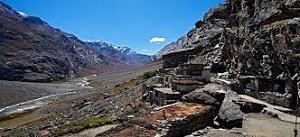
Jammu & Kashmir, North India, Buddhist Monestery, Buddhist Stupas, Caves, History, Nature, Trekking
Dzongkhul Monastery is located in Stod Valley, Zanskar, Jammu and Kashmir, India. This monastery belongs to Tibetan Buddhism. It is famous for Yogins. Other name of this monastery is Zongkhul Monastery.
What to see in Dzongkhul Monastery: Tibetan Buddhism culture can be seen here. Trekking is the only way to reach this monastery. This lies between trek route of Padum and Kishtwar. A million years ago this was founded by Naropa. He is a Buddhist Yogi and lecturer of Vikramshila and Nalanda University in Bihar. At this place Naropa meditated for 2 years. Here we can see two caves. Near the lower cave foot print can be seen. It is believed that this was the foot print of Naropa. Ancient age artistic achievement can be seen here. Murals and Frescos can be seen here. One of the murals is quite impressive. Collections of artefacts such as thangkas, texts containing the spiritual songs, a crystal stupa, and ivory image of Samvara are located here. This monster consists of 23 novitiates and 15 monks. Several shrines of can be seen in this monastery. Few shrine images are Mahakala, Mitukpa, Padmasmbhava and Buddha. Zongkhul Huchot festival celebrates grandly every year at this monastery. According to the Tibetan Calendar, this festival celebrates on 16th and 17th day of the fourth month.
What to see around Dzongkhul Monastery:
Padum: It was once acted as capital to Zanskar. Padum Valley is the major attraction of this place. Other attractions of this place are Starrimo Monastery and Trekking.
Karsha: In this region this is the largest Gompa. In 10th century this was founded by Phagspa Shesrab. According to the Tibetan Calendar, a festival celebrates on 28th and 29th of 6th month. At that time sacred dance will be performed by the Monks. Other attractions of this place are Chukshik –Jal, Dorje – Dzong nursery.
Drang Drung Glacier: This is situated across Suru Valley in Jammu and Kashmir. It is surrounded by two small alpine lakes and snow covered peaks.
Pipiting: It is located very near to Zanskar. This place is famous for several ancient temples and stupas. Other attraction near this place is Sani. This monastery has ancient chortens. It is constructed by Emperor Kanishka. Attractions of this Gompa are idols, paintings and murals of Saint Padmasambhava.
Phuktal Gompa: It is constructed in the shape of beehive on the rock wall. Major attractions of this gompa are huge prayer hall and meditation room. This gompa is dates back to 11th century.
Leh: This place is known as land of Lamas. It is one of the most beautiful places in India which is situated near the banks of Indus River.
Shagma Karphu: This place is famous for maintaining peaks, Zanskar Valley, sunset and sunrise. Buddhist culture is dominating at this place. By melting the snow, doted marshy lands are formed.
Getting to Dzongkhul Monastery: This monastery can be reached only through trekking from Padum. All means of transport is available only till Padum. To reach Padum there are two routes; one is from Leh and other one is from Srinagar. Nearest railway station is located at Jammu which is 735kms away from this monastery. Taxis and Buses are available to reach Padum via Kargil from the railway station. Nearest Airports are located at Srinagar and Leh.
Getting around Dzongkhul Monastery: Only way to see this monastery is on foot. Nearest places of Dzongkhul Monastery can be visited by Taxis and Buses from Padum.
Best time to visit Dzongkhul Monastery: Best time to visit this monastery is between July to November. During other seasons this place is covered with snow.
Where to stay in Dzongkhul Monastery: Hotels are not available here. Camping gears are available from rent. Few beds will be provided by the monastery.
Where to eat in Dzongkhul Monastery: No hotels and restaurants are located here. It is advisable to carry food.
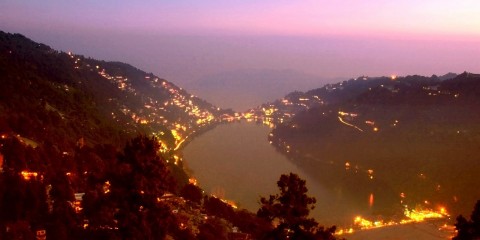
Uttarakhand, North India, Caves, History, Musuem, Nature, Shakti peethas, Temple, Trekking, Valley, Wildlife Sanctuary
Nainital is a popular hill station of Uttarakhand, India. Nainital is having its own place in the history. According to Skand Puranas, Nainital Lake is also known as Tri Rishi Sarovar. Three Sages are Pulaha, Pulastya and Atri. When these sages come to this place there are no water at this place, then they have kept a hole to have water.
What to see in Nainital:
Nainital Lake: It is located at the heart of the city. Town is derived its place due to this lake. Northern end of the lake is called Mallital and southern end is known as Tallital. Bridges connects these two ends of the lakes. It is eye shaped lake.
Naina Devi Temple: It is located at the banks of river Nainital. Major shrines of this temple are Lord Ganesha and Goddess Mata Kali. When Lord Shiva carrying the body of Goddess Sati, one of the body part of sati fell at this place. So this is considered as one of the Shakti peethas.
Governors House: Visitors can see Victorian Gothic Domestic style architecture at this place. It was built in 1899. FW Steven is the architecture of this House. It is two storied complex consists of golf links, a swimming pool, large garden and 113 rooms.
Eco Cave Gardens: It consists of musical fountain and 6 caves. This is the natural Garden.
Gurney House: Earlier this was the residence house of Jim Corbett. Museum of Corbett can be seen in this house.
Pt.GB Pant High Altitude Zoo: In India this is one of the high altitude zoo. Major attractions of this place are Serao, Snow Leopard, Siberian Tiger etc.
Tiffin Top: Other name is Dorothy’s seat. It is located on Ayarpatta hill. From this place visitors can have the best view of surrounding country side. It is a stone work picnic perch.
Naini Peak: It is the highest peak of the town.
Snow View: It is located on Sher-ka-danda Ridge. Visitors can reach this place by cable car. From this place visitors can have best view of Nanada Kot, Trisul, Nanda Devi and Snow peaked Himalayas.
What to see around Nainital:
Bhimtal Lake: It is located 22kms away from the town. This is the biggest lake of Nainital district. It is named after Bhima, one of the Pandavas. At this place one can see 17th century temple complex.
Khurpa Tal: It is located 10kms away from Nainital. This place is famous for angling. It is surrounded by terraced fields.
Sattal: It is located 23kms away from Nainital. Sattal means Seven Lakes. Each one is interconnected with each other. Most popular lakes are Ram, Sita and Laxman lakes.
Naukuchia Tal: It is located 26kms from Nainital. It is believed that if one takes in all nine corners in one glimpse, they can disappear into the smoke of clouds.
Jim Corbett National Park: It is located 63kms away from Nainital. Major attractions of this place are Common musk Shrew, Wild Boar, Chital, Tiger, Elephant etc.
Getting to Nainital: Nainital is well connected with road. From all the nearest cities buses come to this place. Nearest railway station is located at Kathgodam which is 34kms away from the town. From all the major cities trains come to this place. Pantnagar is the nearest airport located at 71kms away from the town. Taxis are available to reach Nainital from airport.
Getting around Nainital: Buses and Taxis are available to visit the surrounding places of Nainital.
Best time to visit Nainital: Nainital welcomes the tourists throughout the year.
Where to stay in Nainital: Plenty of accommodations available to stay in Nainital including luxury hotels. Best hotels are Classic The Mall, Balrampur House, Hotel Maharaja. Few resorts are also available here.
Where to eat in Nainital: Plenty of restaurants are available to eat in Nainital.
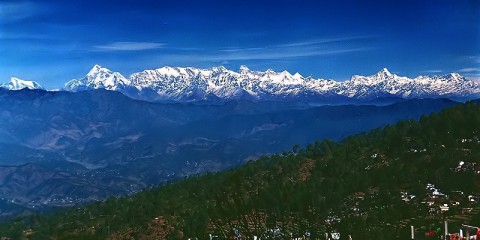
Uttarakhand, North India, Caves, Hill station, History, Hot Springs, Musuem, Nature, Tea Garden, Temple, Trekking,Valley, Water falls
Kausani is a hill station in Bageswar district of Uttarakhand, India. This place is famous for its scenic beauty. Mahatma Gandhi called this place as Switzerland of India. On either side of the Kasauni, visitors can see the beauty of Gomti River and Kosi River. Visitors can have the spectacular view of Panchuli, Nandadevi, Trishul peaks of Himalayas. Trekking and high flavour tea is most famous in this place.
What to see in Kausani:
Anasakti Ashram: Mahatma Gandhi stayed at this place. He penned the commentary on Anashkti Yog. Other name of this Ashram is Gandhi Ashram. Now it is converted into Study cum Research centre.
Lakshmi Ashram: In the year 1948, this Ashram was founded by Catherine Hillman. He became most popular with the name Sarlaben. He was the disciple of Mahatma Gandhi. Ashram is running boarding school for the girls at the foot hill of Kausani. Other name of this Ashram is Sarla Ashram.
Sumitranandan Pant Gallery: This is dedicated to Hindi Poet Sumitranandan Pant. Kausani is the birth place of this poet. Museum consists of awards received by him, manuscripts of the poems and draft copies of his literacy.
Planet Show: It is a planetarium cum internet cafe. Stargazing is an option for the tourists, when clear night sky is available. In the show astronomers explain about astronomy to the visitors of this place.
What to see around Kausani:
Pinnath: It is located 5kms away from the town. This place can be reached by trekking. Indian arch which has representations of the Pandavas on its sides, form the roof of the portico.
Rudrahari Mahadev Temple: It is located 8kms away from the town. It is an ancient cave temple. It is believed that Rishi Kaushik meditated here for a long time.
Kausani Tea Estate: World famous Kausani Tea is produced here. Major exports of this tea are to United States, Korea, Germany and Australia. Visitors can see the manufacturing process of tea. Area covered by this estate is 208 hectares.
Rudradhari Falls and Caves: It is located 12kms away from the town. Trekking can be used to reach this place. Valley flows as small springs and rivers.
Someshwar: Lord Shiva temple of this place is most famous. Beauty of Someshwar Valley can be enjoyed from here. It is located 12kms away from the town.
Baijnath Temple: It is located 16kms away from the town. This temple was constructed in 12th century which is situated at the town Baijnath and on the banks of Gomti River. According to Hindu Mythology, Lord Shiva and Parvati got married at the confluence of River Gomti and Garur Ganga. Other attraction of this town is Maheshsur Mardini.
Getting to Kausani: Kausani is well connected with road and railways. From Pithoragarh, Nainital, Ranikhet, Almora etc buses come to this place. From Delhi, Lucknow, Jaipur, Ghaziabad, Kanpur etc trains come to this place. Nearest airport is Naini Saini airport at Pithoragarh which is located 112kms away from the town. Taxis are available to reach the town from the airport.
Getting around Kausani: Horse drawn Carriage or Tonga is the best means of transport in Kausani. Places in Kausani can see on foot. Buses and taxis are available to visit the surrounding places of Kausani.
Best time to visit Kausani: As the region is so slippery it is advisable not to reach this place during rainy season. Best time to visit this place is between September to May.
Where to stay in Kausani: Resorts, midrange and budget hotels are available to stay at this place. Rest house is maintained by Kumaon Mandal Vikas Nigam. Accommodation is also available in Ashrams.
Where to eat in Kausani: Eating options are very limited in the town. In-house restaurants of hotels are the best option to have food in Kausani.
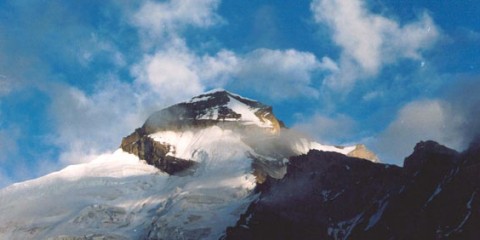
Uttarakhand, North India, Caves, Hill station, History, Skiing, Tea Garden, Temple, Trekking, Valley, Wildlife Sanctuary
Pithoragarh is a city in Pithoragarh district of Uttarakhand, India. From this place visitors can have the spectacular views of Nanda Kot, Nanda Devi and Panch Chulhi snow capped peaks. Forts and temples are the major attraction of this place. People of this place celebrate most of the festivals related to Harvest. Famous festivals of this place are Chaittol, Hill Jatra. Other celebrations of this place are Lacchar Fair, Dhanlek Fair, Chipla Jat, and Nanda Devi Fair. Adventurous sports such as Trekking and Skiing are other attractions of this place.
What to see in Pithoragarh:
Pithoragarh Fort: This was built in 1789 by Gorkhas. At present this is in ruins stage. Kali Kumaon is most visible from this place.
Patal Bhuvaneswar: This is a cave temple situated at the height of 1350meters. It is believed that there are 33crore Hindu Gods and Goddesses are placed here.
Chaukori: This place is famous for Tea Gardens and Temples. Nandakot and Nanda Devi peaks can have a best view from this place. This place is also known as Heaven of Kumaon.
What to see around Pithoragarh:
Nagmandir of Berinag: Berinag village is famous for Nag Temple. This temple is dedicated to Lord Shiva. It is located 1km away from the city. This place is surrounded by Ravine and tree clusters.
Kapilaswar Cave: It is located 3kms away from the town. Mahadev is worshipped here. It is believed that Muni Kapil, meditated in these caves. To see the deity, visitors have to travel 10meters distance in the cave. Just 0.5km away from this cave Temple of Rai can be seen here.
Chandak: It is located 8kms away from Pithoragarh. This place is famous for Manu Temple. Northern part of this place is having Soar Valley. This valley provides trekking facility. Hang glinding is other attraction of this place.
Dhwaj Temple: It is located 10kms away from the town. Temple is dedicated to Lord Shiva and Maa Jayanti. This is the perfect place to view Himalayas.
Nakuleshwara: It is located 10kms away from the town. This temple was built by Nakula and Sahadev (last two Pandavas). Lord Shiva is worshipped here. Based on the Khajuraho style architecture of this temple is designed. Major architecture images are Kurma, Nauvarga, Mahisasur Mardini, Surya, Uma Vasudev, Narsingha etc.
Thal Kedar: This temple is dedicated to Lord Shiva. It is located 15kms away from the town. This place is known for its scenic beauty. Trekking is other attraction of this place.
Askot Sanctuary: In the landscape plenty of temples are located. It is situated 54kms away from the city. Major attraction of this place is Chukors, Snow Leopards, Chirs, Snow Cocks, Musk Deers etc.
Gangolihat: This place is known for ancient myths and rich culture folks. Shakti Peeth was established by Shankaracharya in this place at Mahakali Temple. Other attractions of this place are Hatkalika Fair and Kalika Temple. It is located 77kms away from the city.
Getting to Pithoragarh: Pithoragarh is well connected with road ways. From the cities such as Lohaghat, Tanakpur, Almora, Munsiyari etc buses come to this place. Nearest railway station is located at Kathgodam. From Dehradun, Kolkata, Jammu etc trains come to this place. Nearest airport is located at Pantnagar. This airport is well connected with Delhi. This airport is located 450kms away from the city.
Getting around Pithoragarh: Private Vehicles are used to visit the surrounding places of Pithoragrah.
Best time to visit Pithoragarh: Best time to visit this place is between March to June and from September to December.
Where to stay in Pithoragarh: Limited accommodations are available to stay in Pithoragarh. Only budget and midrange hotels are available to stay. Almost all the hotels are allocated near tourists sports. KMVN rest house is also available.
Where to eat in Pithoragarh: Very limited restaurants are available to eat in this city. All the restaurants serve Continental, Chinese and Indian Cuisines.
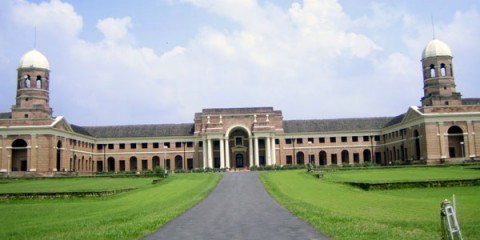
Uttarakhand, North India, Architecture, Caves, Hill station, History, Musuem, Nature, Temple, Wildlife Sanctuary
Dehradun is the capital city of Uttarakhand, India. It is famous for picturesque landscape and natural resources. This place is having historical background. It is believed that this is the birth place of Dronacharya who was the Guru of Pandavas and Kauravas in the epic Mahabharata. This place is also in Ramayana. It is believed that after the death of Ravana, Lord Rama along with Lakshmana visited to this place. Evidences of these are found in the excavations. Best places for shopping lovers are Astely hall, Rajpur Road and Paltan Bazaar.
What to see in Dehradun:
Museum: It is one of the major attractions of the city. This was established in 1971. Origin and development of the city related artefacts can be seen in this museum.
Clock Tower: This was constructed by Britishers before independence. It is six faced tower. Architecture of this tower is so beautiful.
Forest Reserve Institute: Building was constructed in Greco Roman colonial Style. It consists of 6 museums related to entonomy, nonwood forest products, timber, Silviculture, pathology and Social Forestry. This place also has Botanical Garden.
Sahastradhara: It is a beautiful spring. Sulphur present in this spring water. Beautiful views can be enjoyed here. It is believed that this water is having medicinal values.
Mahadev Temple: It is located in Garhi Cantonment area. This temple is dedicated to Lord Shiva. It is a cave temple. It is believed that Lord Shiva made milk flow from the cave for Ashwathma.
Mall Road: This is the best place for shopping lovers. Wide range of products available such as readymade garments, handicrafts, second hand books, ornaments, electronic items, Garwahli shawals, blankets, Tibetan Carpets, traditional jewellery etc.
Waida institute of Himalayan Geology: It consists of huge library consists of several research journals along with best collection of books. To educate the people about general geology and Himalayan; charts, maps and videos are available here.
Paltan Bazaar: This place is famous for wooden crafts items. Fragrances of Basmati Rice and Spices can enjoy at this place.
Other attractions of Dehradun: Other attractions of Dehradun are Ram Rai Gurudwara, Tibetan Buddhist temple, Tapkeshwar Mahadev Temple, Jaspal Rana Shooting Ranges.
What to see around Dehradun:
Chandrabani: It is located 7kms away from Dehradun. People believed that this was the residence place of Maharishi Gautam and his daughter Anjali. It is also believed that Maa Ganga, Daughter of Heaven is manifested here.
Malsi Deer Park: It is located 10kms away from Dehradun. This is the best picnic place for the children. Apart from deers visitors can see Peacocks.
Indian Military Academy: It started functioning from 1st October 1932. Major attractions of this academy are 18 holes FRIMS Golf Course, Shooting Demonstration, War Memorial and Museum. It is located 8kms away from Dehradun.
Mundali: It is located 2.5kms away from Dehradun. This is the best place for Ski Professionals and for snow lovers.
Other attractions near Dehradun: Other attractions near Dehradun are Robbers Cave, Lacchiwalla, Chetwoode Hall, Laxman Siddh Temple, Swarg Niwas Temple.
Getting to Dehradun: Dehradun is well connected with road, railways and airways. From cities such as Ujjain, Varanasi, Kolkata, Chennai, Delhi etc buses and trains come to this place. Flights from Delhi come to this place.
Getting around Dehradun: Autos, Buses, Cars are available to visit the surrounding places of Dehradun.
Best time to visit Dehradun: Dehradun welcomes the visitors throughout the year.
Where to stay in Dehradun: Plenty of accommodations available to stay in Dehradun. Midrange and Luxury hotels provide free pick up services from the airport.
Where to eat in Dehradun: Several eating options available in Dehradun. North Indian dishes are popular in these restaurants. Continental, Chinese and Indian cuisines are available in all the restaurants. Noodles taste at small stalls of this place is unique. Tibetan delicacies are most famous in this city.
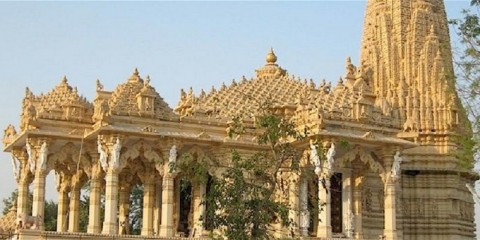
Rajasthan, North India, Boating, Caves, Fort, Hill station, History, Musuem, Nature, Rock Formations, Temple, Trekking, Wildlife Sanctuary
Mount Abu is a world famous tourist’s place which is situated in the Aravalli Range. It is the only hill station in Rajasthan. Other name of this place is summer capital of Rajasthan. According to Puranas, Mount Abu is known as Arbudaranya. It is believed that Sage Vasishta retreated to this place following the difference with Sage Vishvamitra. This place is well known for folk dances, classical music, Rajasthani Handicrafts. Stone crafts, Rajasthani Paintings, leather articles, bangles, wooden and metal artefacts etc are worth buying at this place.
What to see in Mount Abu:
Dilwara Temples: One of the major attractions of this place. It is famous for its stone carvings and architecture styles. Dilwara Temples Attractions are Luna Vasahi Temple, Pitthalhar Temple, Shri Parshavnath Temple, Vimal Vasahi Temple, and Shri Mahaveer Swami Temple. These are constructed in 11th and 13th century.
Archaeological Museum: Major attraction of this museum is Devdasi statues. These statues belong to 6th and 12th centuries. It was built in 1962. This was divided into two sections. Accessories of ancient period are preserved in the first section of the museum. In the second section is so attractive with miniatures paintings.
Mount Abu wild life sanctuary: People visit this place for sightseeing. It is located on the oldest parts of mountain range. Plenty of rare species of flowers can be seen here. Major attraction of this place is Panther, bear, fox and 250 bird species.
Sunset Point: This Place offers a beautiful view of the Sunset.
Nakki Lake: This is one of the major attractions of Mount Abu. Rock formations such as Camel Rock, Nandi Rock, Nun Rock, and Toad Rock can be seen here. Boating is another major attraction of this place.
Neminath Temple: Solanki Style can be seen here. It has a lotus flower carved inside the dome covering the mandap.
Toad Rock: This is the main trekking trail form Abu. Unique rock formations can be seen here.
Sri Raghunathji temple: Lord Vishnu is worshipped here. This temple belongs to 14th century.
Brahma Kumaris Spiritual University: university is offering several courses including yoga, meditation. This is situated with the backdrop of forest.
What to see around Mount Abu:
Guru Shikhar: It is located 14kms away from Mount Abu. Trekking is the major attraction of this place. It is the highest mount peak. Guru Dattatreya Temple is another attraction of this peak. Giant brass bell outside the temple can be seen here. Other temples of this place are Mira Temple, Shiva Temple, and Chamundi Temple.
Achalgarh: It is famous for its fort. This is located 9kms away from Abu. This was built to protect this regions and to have a look on the enemies. Major attractions of this fort are Lord Shiva temple and brass Nandi Structure.
Adhar Devi Temple: It is located in a cave which is 3kms away from Abu. This temple is dedicated to Goddess Durga. 365 steps to be climbed to reach this temple.
Doodh Baori: It is located 4kms away from Abu. This is a sacred well. Water in this well is in milk colour. People believe that this water is having heavenly powers.
Getting to Mount Abu: Abu is well connected with road ways. From all the cities buses come to this place. Nearest railway station is Abu Road station which is 27kms away from Mount Abu. This is well connected with Mumbai and Delhi. Nearest airport is Maharana Pratap or Dabok Airport.
Getting around Mount Abu: Buses and taxis are available to see the places in Abu. Baby Palm is the different means of transportation in Abu to visit the places in this place. Buses and taxis are available to visit the surrounding places.
Best time to visit Mount Abu: Best time to visit this place is between February to June and from October to December.
Where to stay in Mount Abu: Plenty of hotels including luxury hotels are available to stay in Abu.
Where to eat in Mount Abu: Several restaurants available to eat in Abu.
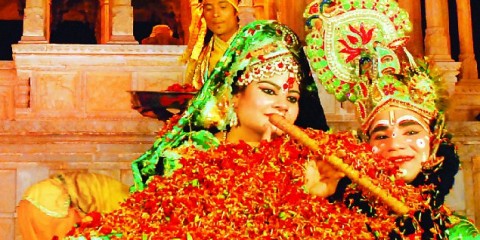
Rajasthan, North India, Architecture, Bundi Utsav, Caves, Fort, History, Miniature Paintings, Palace, Water falls
Bundi is a small city in Rajasthan, India. This place is famous for festivals, Paintings and architecture. City is named after the Meena tribe king Bundi Meena. Earlier name of this city is Bundi Ka Nal. Nal means narrow ways. In Bundi, 50 step wells are located. These are built for the public in 1699. Most beautiful step well is Rani Jiki Barol. Worth buying things in Bundi are miniature paintings and cotton carpets.
What to see in Bundi:
Taragarh Fort: It is the major attraction of Bundi. It is also known as Star Fort. Major attraction of this fort is huge cannon which were named as Garbh Gujam. Fort is in the shape of Horse shoe. Lakes and reservoir situated below the hill. In the fort 3 water tanks are placed. They will never get dry even in the peak summer season.
Chaurasi Khambo Ki Chatri: This is known for 84 pillars which were erected by Rao Anirudh.
Moti Mahal: This was constructed using 80 pounds of gold. Different selected stones are also used in the construction of this mahal. Beautiful mirror work can be seen on the ceiling.
Bundi Palace: This palace is famous for Rajasthani Craftsmanship. Only one of the palaces is open for the public. This part is known as Chitra Shala. Attractions of this Palace are Diwann-e-Aam, Old water clock, Hathi Pol, Naubat Khana, Hazari Pol, and Miniature paintings.
Chitrasala: It is located inside the Garh Palace. Paintings on the walls of this sala display Ras Lila and Ragmala Stories.
Sukh Mahal: It is situated near Jait Sagar Lake. Now it was converted into an irrigation rest house. White marble chhatri placed at the second storey of the Sukh Mahal.
Nawal Sagar Lake: It is located at the centre of the city. It is an artificial lake. Mirror image of the city can be seen in the waters of this lake.
Phool Sagar Lake: It is situated in Phool Mahal Complex. Between November to February this region fills with beautiful migratory birds.
Bundi Utsav: This organises in November- December every year. Thousands of visitors come to this place during this season. Exhibitions, arts & Crafts, fireworks Competition and Painting, Sports, dance and music competitions conducts here.
What to see around Bundi:
Rameshwar: It is located 15kms away from Bundi. This place is famous of Cave temple which was dedicated to Lord Shiva. Waterfalls are the other attraction of this place.
Bijoliya: This place played a major role during the reign of Chauhan rulers. They have constructed 3 Lord Shiva temples in 13th century. It is located 51kms away from Bundi.
Jait Sagar: It is located 3kms away from Bundi. This is full of lotus flowers. It was surrounded with huge wall and 4 gateways.
Shikar Burj: It is one of the major attractions near Bundi. It is located 4kms away from Bundi city situated in Bundi Forests. Earlier this was old hunting cottage but now this was converted into picnic spot.
Getting to Bundi: Bundi is well connected with road ways. From all the cities of Rajasthan, private and state run buses come to this place. Nearest railway head is located at Kota. From Udaipur, Ratlam, Kolkata, Delhi, Ajmer trains halt at this station. Taxis are available from railway station to reach Bundi. Nearest airport is located at Jaipur which is 215kms away from Bundi. Taxis are available to reach Bundi.
Getting around Bundi: City can be explored on foot or by auto rickshaw. Buses and Taxis are available to visit the surrounding places of Bundi.
Best time to visit Bundi: Best time to visit Bundi is between August to March.
Where to stay in Bundi: Plenty of accommodations are available to stay in Bundi including luxurious hotels. Luxury hotels provide Rajput hospitality.
Where to eat in Bundi: Plenty of restaurants available to eat in Bundi. Continental, Chinese and Indian food is available in the restaurant.
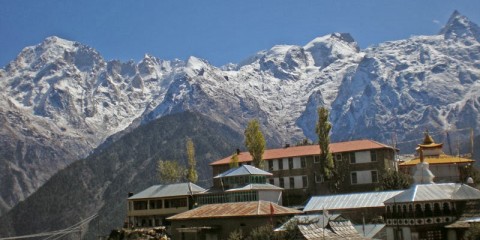
HP, North India, Caves, Fort, Hill station, Nature, Temple, Trekking, Valley, Water falls, Water Sports
Hamirpur is a town in Hamirpur district in Himachal Pradesh, India. It is mainly a hilly terrain. This was created as a result of trifurcation of Kangra district on 1st September 1972. Hamirpur is famous for cultural activities and history. Una is located on the west of Hamirpur; Mandi is located on the east, Bilaspur to the south and Kangra to its north. According to Puranas, this was a part of Jallandar (Trigarta Empire). Paragliding events and annual hang gliding are famous in this town. Visitors can enjoy angling, rock climbing, trekking, mountaining activities. Trekking is available only from April to October. Hamir Festival celebrates grandly. Every year this festival celebrates grandly in the first week of November.
What to see in Hamirpur:
Sujanpur Tihra: This is the major attractions of Hamirpur. It is the fort built by Raja Hamir Chand. Fort was having huge walls. Major attractions of this fort are Shrines and Paintings in the fort. This place acted as capital town to the Katoch rulers.
Nadaun: Palace in this place says the glory of Katoch rulers. It is one of the Shakti peeth temple. This is located on the banks of river Beas. River rafting is most famous in this place.
Deot Sidh Temple: This temple is dedicated to Baba Nayak. In the Dhaulagiri hills cave temple is located.
Other attractions of Hamirpur: Other attractions of Hamirpur are Kalpa Vriksha, Nirankari Ashram, Singh Maheshwari Temple and Chaura Devi Temple.
What to see around Hamirpur:
Naina Devi Temple: This temple is located 69kms away from the town. Naina Devi Temple is one of the Shakti Peethas of India. This temple was built by Raja Bir Chand. It is believed that Sati’s eye fell in this place.
Kangra: This is the best place for trekking lovers. It is located 75kms away from the town. Major attractions of this place are Al Hilal, Naam Art Gallery, Brijeswari Temple, Baijnath Temple, and Chamunda Devi Temple.
Dharmasala: Dharmasala is located in Kangra district of Himachal Pradesh. Major attractions of Dharmasala are Dal Lake, Himachal Pradesh Cricket Association Stadium, Billing Adventure, Tsuglagkhang. This place is situated 105kms away from the town.
Palampur: This place is famous for Tea Gardens. Other name is Tea Capital of North India. After Kullu and Manali this is famous honeymoon destination. It is located 66 kms away from Hamirpur.
Triund: This place is popular for adventure and trekking activities. It is located 98kms away from the town.
McLeod Ganj: This was the residential place of Dalai Lama, Tibetan Spiritual Leader. It is situated in Dhauladhar mountain range of Dharmasala region. This place is located 100kms away from the town.
Getting to Hamirpur: Hamirpur is well connected with road ways. From Pathankot, Chandigarh, Shimla, buses are available to reach to this place. Nearest railway station is Una which is 81kms away from the town. Chandigarh airport is the nearest airport of Hamirpur which is 187kms away. This airport is well connected with Indore, Kullu, Amritsar, Bangalore, Mumbai and Delhi. Private vehicles and taxis are available to reach to Hamirpur.
Getting around Hamirpur: Autos, Buses and Taxis are available to visit the surrounding places of Hamirpur.
Best time to visit Hamirpur: Best time to visit Hamirpur is between September to June.
Where to stay in Hamirpur: Very limited hotels are available to stay in Hamirpur. All these hotels are budget and midrange hotels. Visitors cannot expect luxury accommodations. Few guest houses are also available.
Where to eat in Hamirpur: Restaurants are very limited in this place. Existing restaurants offer both international and Indian cuisines. In Bhota Road best cuisines of non vegetarian are available. Best vegetarian food is available in the restaurants located at Gandhi Chowk and Hira Nagar.
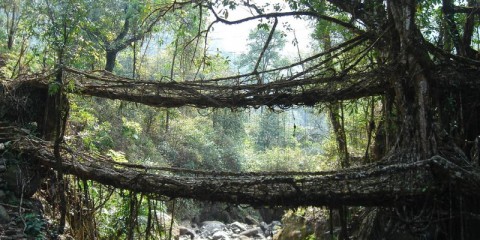
Meghalaya, North East India, Caves, Hill station, Musuem, Nature, Temple, Trekking, Valley, Water falls, Wildlife Sanctuary
Shillong is the capital of Meghalaya. This is the home to Khasis. Britishers influence is more in this place. Even today visitors can find British influence in language, lifestyle and architecture. Traditions of both Europe and India can be seen here.
What to see in Shillong:
Golf Course: One of the oldest Golf Courses in the country. This was started in the year 1898 at Laban. Initially this was started with the course of 9 holes; in 1924 it was transformed to 18 holes.
Police Bazaar: This is popularly known as PB. Plenty of hotels, restaurants, shops are located here. This is the best place for the shopping lovers.
Don Bosco Museum: This museum provides information about north eastern states such as Tripura, Nagaland, Mizoram, Manipur, Meghalaya, Arunachal Pradesh and Assam. Best collection of weapons, photographs, ornamentation, handicrafts, accoutrements, attires, Regional artwork can be seen here.
Shillong Peak: Thousands of tourists come to this place every year. According to the history Shillong city is named after this peak. One of the attractions of this place is Indian Air Force Radar Station. Cameras are not allowed due to security reasons. This peak provides breath taking view of Shillong city and Himalayan Ranges.
Lady Hydari Park: This is one of the major attractions of the Shillong. This is dedicated to first lady of the province, Lady Hydari. She was the wife of Governor of Assam. Major attraction of this park is huge variety of orchids and local flowering plants. This park consists of mini Zoo also. In this zoo 140 reptiles, 73 species of birds can also be seen. This park is in Japanese style.
Other attractions of Shillong: Other attractions of Shillong are Elephant Falls, Wards Lake, Meghalaya State Museum, Wankhar Entomology Museum, All Saints Church, Botanical Survey of India Orchidarium, Shillong Cathedral, Laitlum Canyons, The Meghalaya Butterfly Museum.
What to see around Shillong:
Mawsynram: This place is located 54kms away from Shillong. It is the wettest place on the earth. Major attractions of this place are lush waterfalls, abundant greenery, clear blue skies and fresh air. Other attractions of this place are Mawjymbuin Cave with huge Shivaligam.
Spread Eagle Falls: It is located 6kms away from the city. In the entire Shillong, Spread Eagle Falls are the widest falls. Other name of this falls is Sati falls. People can enjoy Sparkling Waterfalls.
Mawplang: Most famous forest groves are located here. This forest is also known as sacred forest. Castanopsis Kurzii Trees are majorly seen in this forest. This place is considered as natures own museum. Major attractions of this museum are orchids, fern allies, Pipers, Aroids. It is located 25kms away from Shillong.
Sohpetbneng Peak: Bird’s eye view of city of Shillong and dense forest is possible from this peak. It is believed that Hynniewtrep tribe of Meghalaya grew a tree at this peak which acted as a ladder between them and a God. It is located 20kms away from shillong.
Other attractions near Shillong: Other attractions near Shillong are Umiam Lake, Sweet Falls, Beadon Falls, Bishop Falls, Mawlynnong Waterfalls, Mawjymbuin Caves, David Scott Trail, and Diengiei Peak.
Getting to Shillong: This place is well connected with road, railways and airway. From the cities such as Hyderabad, Chennai, Bangalore, Delhi, buses and trains are available to reach this place. From Patna, Mangalore, Ranchi, Jaipur flights are available to reach this place.
Getting around Shillong: Buses, Private vehicles, Taxis are available to visit the surrounding places of Shillong.
Best time to visit Shillong: Visitors can reach this place throughout the year.
Where to stay in Shillong: All range of hotels such as Budget, Midrange and Luxury Hotels are available to stay in this place.
Where to eat in Shillong: Plenty of restaurants are available to eat in Shillong.
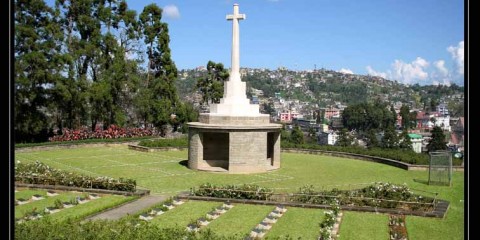
Nagaland, North East India, Caves, Hill station, Musuem, Naga Tribes, Nature, Trekking, Valley, Water falls, Wildlife Sanctuary
Kohima is hilly capital of Nagaland, India. It is the land of Angami Naga tribe. Earlier name of this place is Thigoma. As Britishers unable to pronounce this name they have changed the name as Kohima. This place is famous for wild flowering plants. This town is named after one of the wild plant called Kewhi. Kohima region consists of 16 principle tribes. All belongs to Naga Tribes. Naga Bazaar and Ruzaphema are best places for the shopping lovers. Decorative items, Vests and Shawls are worth buying here.
What to see in Kohima:
Catholic Church: In the North East Region of India, this church is the biggest church. Missionary sisters of Jesus Christ came to this place in 1948 to provide service to the civil hospital of the region. From then onwards Christianity spread in this region.
War Cemetery: This cemetery consists of more than 1420 funerals of the soldiers who died during Japanese invasion at the time of World War II. It is best historical site in Kohima. It consists of 330 Indian Burials, 5 Canadian and 1100 British Burials.
Nagaland State Museum: Rare collection of artefacts which belongs to 16 tribes can be seen here. Other attractions of this place are inscriptions, traditional attires, necklaces, precious stones, clan motifs.
Japfu Peak: One of the major attractions of this place is Rhododendron Tree. This tree entered into Guinness book of world Record. Height of this tree is 130 feet tall. Trekking is the other attraction of this place.
Kohima Museum: Collection of beer mugs, gadgets for Kitchen, farm implements, precious stones, is the major attractions of this museum.
What to see around Kohima:
Dzukou Valley: This is located 25kms away from Kohima. It looks so beautiful with multi colored rhododendrons, Euphorbia, aconitum and Lilies. This valley is used for trekking purpose. Trekking is the major attraction for several visitors.
Tuophema: State Government declared this village as ancient Heritage village. This place is so clam. Social system of Nagas can be known from here. Famous dishes of Nagas such as Bamboo baked fish; rice beer, bamboo and Pork are available here. It is located 35kms away from Kohima.
Zoological Park: It is located 70kms away from Kohima. Rare Bird species, Tragopan is the major attraction of this park. This is the state bird of Nagaland. Animal attractions of this place are Golden Langur, Wild Buffalo etc. Jungle Safari, Nature trips and Bird watching activities are major attractions of this place.
Intangki Wildlife sanctuary: This is located 45kms away from Kohima. Major attractions of this sanctuary are Mithun, Elephants, Tiger, Black Stork, Khaleej, Common Pheasant, Hornbill etc. Flora and Fauna are also other attractions of this place.
Ruzaphema: This is major attraction for shopping lovers. Beautiful and Unique shops are made by tribal women of Nagaland. It is located 5kms away from Kohima.
Getting to Kohima: Only way to reach this place is road way. From cities such as Mizoram, Manipur, Arunachal Pradesh, Tripura, Meghalaya buses come to this place. Nearest railway station and airport is at Dimapur.
Getting around Kohima: Buses, Vans and Cars are available to visit the surrounding places of Kohima. Travel in the smallest vehicles is more safe as this a hilly region.
Best time to visit Kohima: Best time to visit Kohima is between November to March.
Where to stay in Kohima: Accommodations are very limited in Kohima. Only budget and midrange hotels are available to stay in Kohima. Cost of budget hotels is between Rs.500 to Rs.700. Cost of midrange hotels is ranging between Rs.800 to Rs.1500.
Where to eat in Kohima: This is known for non vegetarian. Most famous food is Zouthou, Ghalo and Bamboo baked with Fish.
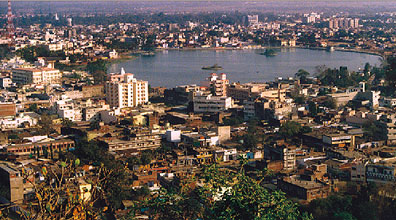
Jharkhand, East India, Boating, Caves, History, Musuem, Nature, Rock Formations, Temple, Valley, Water falls, Wildlife Sanctuary
Ranchi is the capital of Jharkhand, India. Rachi name is derived from the Oraon Village, Archi. Oran word is used for bamboo grove. One of the legends of this place is, once a farmer beat the spirit with bamboo stave. The Spirit shouted archi, archi, archi and vanished. This place is famous for beautiful valleys, barren rocks, green hilly regions and waterfalls. Ranchi is rich in natural wealth such as mica, copper, coal and iron. Wild life is another major attraction of this site. This is the home town of Indian Cricket captain Mahindra Singh Dhoni. Tribal culture is more in this village. Metal crafts, toys, wood products, Bamboo products are worth buying of this place.
What to see in Ranchi:
Ranchi Lake: It is located at the heart of the city. This place is most famous for picnic spot .Boating is the major activity conducts here.
Rachi Museum: Major attractions of this museum are ethnological objects, numismatics, arms, stone sculptures, terracotta sculptures, prehistoric implements.
Ram Rekha Dham: It is believed that during the 14 years exile, Lord Rama along with Lakshmana and Sita stayed here for few days. Temple is located inside the cave.
Tagore Hill: This is located near Albert Ekka Chowk. Height of this hill is 300feet. This is named after the poet Rabindranath. It is believed that he love this place for its scenic beauty.
Other attractions of Ranchi: Other attractions of Ranchi are Rock Garden, Kanke dam, Yogoda Satsanga Sakha Math, Gonda Hill, Birsa Deer Park, Ranchi University Museum, Nakshatra Van, Birsa Zoological Park, Pahari Mandir.
What to see around Ranchi:
Surya Temple: It is the major nearby attraction of the city. It is located 39kms away from the city. Major attraction of this city is statue of Chariot with 7 horses and 18 wheels. This was built by Sanskrit Vihar.
Deori Temple: This is one of the most ancient temples which are dedicated to Goddess Kali. Idol has 16 arms. Pillars of this temple are made up of sand stone.
Hundru Falls: These are located 45kms away from the city. Different rock formations are the major attraction of this site.
Jagannath Temple: It is located 10kms away from the city. This was constructed by the king of Barkagarh, Jagannathpur Thakur in 1691. Architecture style is so attractive.
Panch Gagh Falls: It is one of the best picnic spots near Ranchi. It is located between Road and Chakradharpur Road. These falls are 6kms away from Khunti Village.
Other attractions near Ranchi: Other attractions near Ranchi are Jonha Falls, Dassam Falls, Muta Crocodile Breeding centre, Angrabadi Temple Complex, Hirni Falls.
Getting to Ranchi: Ranchi is well connected with Road, Railway and air ways. From the cities such as Jamshedpur, Patna, Dhanbad, Chaibasa etc buses are available to reach this place. From all the important cities of India trains come to this place. Ranchi airport is located at Hinoo. It is well connected with Mumbai, Pune, Kolkata and Delhi.
Getting around Ranchi: Buses, Autos, Taxis are available to visit the surrounding places of Ranchi.
Best time to visit Ranchi: Ranchi can be visited throughout the year but better to avoid during peak summer season as temperature is too hot.
Where to stay in Ranchi: Plenty of accommodations are available to stay in Ranchi starting from Budget hotels to luxury hotels. Cost of budget hotels are below Rs.1000 per night. Cost of luxury hotels is about Rs.4000.
Where to eat in Ranchi: Plenty of restaurants are available to eat in Ranchi. All the restaurants serve continental cuisines. Cafe Coffee, Dosa Plaza, KFC, Subway, Dominos have outlets in Ranchi.
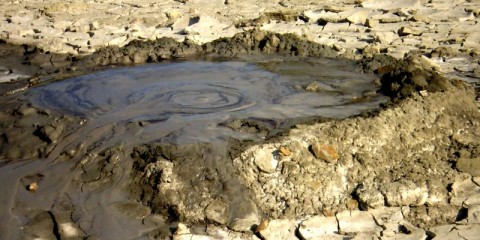
Andaman, East India, Beach, Boating, Caves, Mud Valcanoes, Nature, Wildlife Sanctuary
Baratang is an Island in Andaman Islands, India. It is located 20kms east of Port Blair. This Island is famous for mud volcanoes and coastal line is rich in marine life. Apart from mud volcanoes this beach is also known for its beaches and other activities such as Bird Watching, island camping, Snorkelling, Scuba diving and beach tours. During the trip to this Island, lime stone Caves at Nayadera and Parrot Island worthy places to visit. Interacting with tribal’s, taking photographs and offering food is prohibited. This prohibition started when Jarawas died after having food offered by the tourists.
What to see in Baratang Island:
Mud Volcanoes: The Mud Volcanoes squirt fountains of mud at irregular intervals. These volcanoes are the major attraction of this Island. Locals called these volcanoes in the name of Jalki. From the Baratang Jetty is 4kms away.
Roglachang beach: This is the best place for long walks. Sunset seems to be most beautiful from this beach.
Baludera Beach: This is the best place for swimming. It is free from pollution.
Parrot Island: It is very near to Baratang Island. This is the best place for bird watchers. The mesmerizing site of this place is when thousand of parrots are returning their home during the sunset with the backdrop of sunset.
What to see around Baratang Island:
Lime stone Caves: This is the most popular tourist spot in Baratang Island. It takes an hour to reach this place form Baratang Island through Boating. Boat goes though mangrove forest. It is the different and unique experience. It is essential to carry touch while visiting to these caves as these caves are so dark.
Great Nichobar: This place is famous for Giant Leather Back Turtles. Great Nichobar Island has biosphere reserve area.
Karchal: In the Nicobar Group this is the small Island. It was this Island which heralded new Millennium with first sunrise on 1st January 2000. Attraction of this Island is West Bay, Jhula and East bay beaches.
Car Nicobar: All around this place roaring sea and enhancing beaches can be seen. Unique to this Island are having entrance through the floor and Nicobari huts built on stilts. From Port Blair it takes 16hours to reach this place.
Nicobar: This place is famous for Nicobarese Pigeons and Long tail monkeys. Megapode is the rare bird; this can be seen in this place.
Getting to Baratang Island: To reach this place visitor has to reach to Port Blair. Port Blair is well connected with Kolkata and Chennai though air. Buses, cars, Taxis are available to reach this Island. From Visakhapatnam, Kolkata, Chennai ships are available to reach Port Blair.
Getting around Baratang Island: Ferries are available to reach the surrounding places of Baratang Island.
Best time to visit Baratang Island: It is essential to known the best time before visiting to any place. Best time to reach Baratang Island is between October to May and from June to August.
Where to stay in Baratang Island: Prior permission to reach to Baratang Island is essential. Permission has to be taken from Superintendent of Police. Very limited accommodations are available to stay in Baratang Island. It is advisable to look for other options in Port Blair. Best hotels in Baratang Island are Andaman Residency, Sea Shell Beach Resort, Munjoh Ocean Resort, Symphony Palms beach resort.
Where to eat in Baratang Island: Very limited restaurants are available to eat in Baratang Island. Most famous dish in Baratang Island is fish fry.
Barabar Caves are oldest Rock cut Caves in India situated in Jehanabad district of Bihar. These caves belong to Mauryan Period of 3rd century BC. These are located on twin hills of Nagarjuni and Barabar. On the Nagarjun hills 3 caves are located and on Barabar Hills 4 caves are located.
What to see in Barabar Caves: Barabar Caves are most attractive. Plenty of sculptures are located inside the caves. These sculptures belong to both Jains and Hindus. It is believed that these sculptures are carving between 273 BC to 232 BC. Ajivika sect monks used these caves.
Vishwa Zopri, karan Chaupar, Sudama, Lomas Rishi are four caves belongs to Barabar Caves. Of all the four caves Lomas Rishi caves are most attractive caves. These are made up of Granite. It looks like Wooden Huts. These are used to live by Buddhist monks. Stupas are placed in Lomas Rishi Caves. When visitors are going towards this caves row of elephants can be seen which are most attractive.
Innner walls of Karan Chaupar Caves are polished with inscriptions. These inscriptions date back to 245BC. Karan Chaupar Caves are single room caves. Sudama Caves has circular Chambers along with mandapas. These caves have arches look like a bow. Vishwa Zopri Caves are in rectangle shape. These are having two rooms. Of all the 4 caves, Sudama and Lomas are the oldest caves and these are best example for rock cut architecture in the country.
What to see around Barabar Caves:
Ruins of Nalanda University: These ruins are located in the Nalanda town. It is the oldest Buddhist University. It is located 64kms away from these caves.
Nalanda Archaeological Museum: Four main galleries are included in this museum. Main hall consists of Nagaraj Sculptures, Parshvanath sculpture, Bodhisattva Avalokiteshvara, Bhumisparsh postures etc…This was established in 1971. It is located 64kms away from these caves.
BodhGaya: it is the place where Buddha obtained enlightment. It is located 44 Kms away from the caves.
Kundalpur: It is located 60kms away from the caves. This place is famous for Lotus Lake and Jain temple.
Sonbhandar Caves: These caves are also known as Swarna Bhandar which means Store of Gold. It is believed that treasury of King Bimbisara present in this cave. Sonbhandar caves are most ancient and rock cut caves which were dates back to 500BC. These are located 56kms away from the Barabar Caves.
Pippala Caves: These are situated on the top of the hill, Vaibhava Hill. It is a house for the monks. It is believed that Lord Buddha has done meditation in these caves. These are natural caves. Located 52kms away from Barabar caves.
Getting to Barabar Caves: These caves are well connected with roadways. From Patna and other cities of Bihar buses are available to reach this place. Nearest railway station is located at Patna. Taxis, buses and autos are available to reach Barabar Caves from Patna railway station. Nearest airport is at Gaya which is 37kms away from these caves. Gaya airport is well connected with Varanasi, Kolkata and Delhi.
Getting around Barabar Caves: Walking is the only way to see the caves. Taxis, buses and taxis are available to visit the surrounding places of Barabar Caves.
Best time to visit Barabar Caves: Best time to visit these caves is between October to March.
Where to stay in Barabar Caves: No accommodation facilities are available to stay in Barabar Caves. Nearest city is Gaya which is 44kms away from these caves. Accommodations are available to stay in Gaya.
Where to eat in Barabar Caves: Eateries are not available in Barabar Caves. It is advisable to carry food and water.
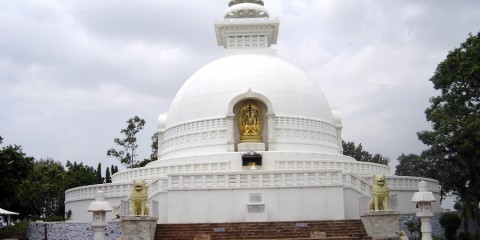
Bihar, East India, Boating, Caves, Fort, History, Musuem, Nature, Temple, Trekking
Rajgir is a city in Nalanda district of Bihar. It was the first capital of Magadha Kingdom. Rajgir was most ancient city dates back to 3000 years old. According to Hindu mythology this was ruled by Jarasandh of Mahabharata. Wrestling match between Bheema and Jarasandh was conducted here. Mahavir spent 14 years of life in this city. City is divided into two parts. First part is surrounded by 7 hills and other part was established by King Ajatsharu. Major attractions of this temple are Hot springs, Trekking and Rope way. Rajgir Dance Festival and Makar Sankranti Mela are most famous festivals in Rajgir.
What to see in Rajgir:
Sonbhandar Caves: These caves are also known as Swarna Bhandar which means Store of Gold. It is believed that treasury of King Bimbisara present in this cave. Sonbhandar caves are most ancient and rock cut caves which were dates back to 500BC.
Pippala Caves: These are situated on the top of the hill, Vaibhava Hill. It is a house for the monks. It is believed that Lord Buddha has done meditation in these caves. These are natural caves.
Hot springs: These are situated at the foot of Vaibhava hills.
Vishwa Shanti Stupa: This is located on the top of Ratnagiri hill. With the help of ropeway visitors has to reach this place. As a symbol of world peace this was built by Japanese. There are 4 statues of Lord Buddha on each corner.
Ajatshatru Fort: This was built by Ajatshatru king of Magadha in 6th century. At the top of the fort 6.5sq.m stupa stands.
Jivaka’s Mango Garden: Jivaka used to be royal Physician of Magadha rulers namely Ajatshatru and Bimbisara.
Ashoka Stupa Peak: This is one of the attractions of Rajgir which was built by Emperor Ashoka with bricks.
Ancient 40kms wall: This is popularly known as Cyclopean wall. It is one of the few important pre-Maurayan stone structures.
Jain Temples: In Rajgir there are 26 Jain temples are situated. These are located on hill crest. Only way to reach this place is through trekking.
Other attractions of Rajgir: Other attractions of Rajgir are Monastery Venuvana Vihara, Ghora Katora Lake, Bimbisara Jail, Gymnasium of Jarasandh, Nava Nalanda Maha Vihira, and New Venu Vana Vihara.
What to see around Rajgir:
Ruins of Nalanda University: It is located 15kms away from Rajgir. These ruins are located in the Nalanda town. It is the oldest Buddhist University.
Nalanda Archaeological Museum: Four main galleries are included in this museum. Main hall consists of Nagaraj Sculptures, Parshvanath sculpture, Bodhisattva Avalokiteshvara, Bhumisparsh postures etc…This was established in 1971. It is located 13kms away from Rajgir.
Other attractions near Rajgir: Other attractions near Rajgir are Nalanda, Bihar Sharif, Pawapuri, Kundlapur, Swarajpur, and Barabar Caves.
Getting to Rajgir: Rajgir is well connected with road and railways. From the cities such as Bihar Sharif, Pawapuri, Nalanda, Patna, Gaya etc… buses are available to reach to this place. Nearest airport is located at Gaya which is 68kms away from this place. Gaya airport is well connected with Varanasi, Kolkata and Delhi.
Getting around Rajgir: Buses, Taxis, Tonga’s are available to visit the surrounding places of Rajgir.
Best time to visit Rajgir: Best time to visit Rajgir is between October to March.
Where to stay in Rajgir: Only budget and midrange hotels are available to stay in Rajgir. Bihar State Tourism Development Corporation is maintaining 3 tourists’ bungalows for the tourists.
Where to eat in Rajgir: Only limited restaurants are available to eat in Rajgir. Almost all the restaurants serve only vegetarian. Chinese, Punjabi and North Indian Cuisines are available.
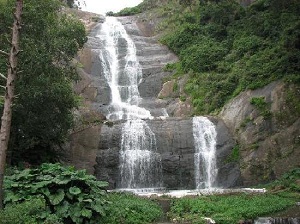
Tamil Nadu, South India, Boating, Caves, Hill station, History, Musuem, Nature, Temple, Valley, Water falls, Wildlife Sanctuary
Kodaikanal is a city and hill station in Indigo district of Tamilnadu. Meaning of Kodaikanal is The Gift of the Forest. Other name of this city is Princess of Hill stations. It was established in 1845. First Westerner to visit this place is BS Ward, British Lieutenant in 1821. Most famous during the festival season is fruits and flower shows and Boat Races. Summer festival and Carnival at Mother Salette Church are most famous festivals in Kodaikanal.
What to see in Kodaikanal:
Kodaikanal Solar Observatory: This is the science museum. During the peak seasons this place opens every day but during off seasons it opens only on Fridays.
Kodai Lake: Boating in this lake is most memorable to all the visitors of this place.
Shembaganur Museum of Natural History: In this place more than 500 taxidermy collection of insects, birds and animals are placed. Tuesday is a holiday to this museum
Green Valley View: It is located 6kms away from Kodaikanal Lake. This valley is so deep, dense and dangerous. This is popularly known as Suicide point.
Kurinji Andavar Temple: This temple is dedicated to Lord Murugan. Other attraction near this temple is Kurinji Flowers. These flowers blossoms once in every 12years.
Other places to see In Kodaikanal: Other places to visit in Kodaikanal are Luthern Church, Bryant Park, Bear Shola Falls, Flora and fauna Museum, Shenbaganur Museum, Dolmen Circle, Coaker’s Walk.
What to see around Kodaikanal:
Berijam Lake: Prior permission from forest department is essential to visit this place. It is located 20kms away from Kodaikanal. Major attraction near this lake is spotted deer, panthers, Bison and snakes. This water used as a drinking water source to nearby villages so this place is not used for boating.
Pillar Rocks: It is situated 7kms away from the city. 3 giant rock pillars are situated here. Near this place public gardens are also most attractive to the visitors.
Guna Caves: Earlier name of these caves is Devils Kitchen. Only sections of the caves are seen now as it is most infected due to bats. It is located 8kms away from the city.
Silent Valley View: It is located on Berijam Lake Road which is 10kms away from the city. Best time to visit this place is during late afternoon and early morning. Better to avoid taking children to this place as valley is so deep.
Dolphin’s nose: it is located 8kms away from the city. This is the best place to see the birds view. For the natural lovers this is the best place to visit.
Silver Cascade: It is located 8kms away from Kodaikanal. This place is famous for waterfalls.
Other places to visit around Kodaikanal: Other places to visit around Kodaikanal are Subrahmanya Temple, Christ the king Church, Perumal Peak.
Getting to Kodaikanal: Kodaikanal is well connected though road ways. From the cities such as Coimbatore, Dindigual, Palani, Trichy, Chennai plenty of buses are available to reach Kodaikanal. Nearest railway station is Palani which is 64kms away from the city. Madurai is the nearest airport to Kodaikanal.
Getting around Kodaikanal: Buses, Vans, Taxis, Rented Bicycles are available to visit the surrounding places of Kodaikanal.
Best time to visit Kodaikanal: Best time to visit this place is between April to June and September to October.
Where to stay in Kodaikanal: Plenty of hotels, resorts are available at Kodaikanal. Home stays are also available to stay in Kodaikanal.
Where to eat in Kodaikanal: Plenty of restaurants are available to eat in Kodaikanal. Both vegetarian and non vegetation food is available. Vegetables, Fruits are very cheap in this place as cultivation is more.
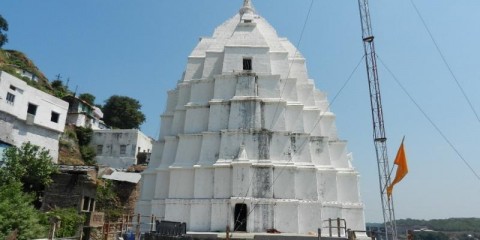
MP, Central India, Boating, Caves, Fort, History, Jyothirlinga, Nature, Temple
Omkareshwar is a sacred place to Hindus. This place is dedicated to Lord Shiva. It is located on Island called Mandhata in Khandwa district of Madhya Pradesh. Shape of this Island is OM which is the symbol of Hindus. Name of Omkareshwar came from the sound Om.
What to see in Omkareshwar:
Omkareshwar Temple: It is the major attraction of Omkareshwar. This is dedicated to Lord Shiva. This temple is looks like Mammaleshwar Temple. Architecture of this temple is Nagara style. This temple is one of the 12 Jyothirlingas of Lord Shiva. According to Hindu beliefs Shiv Ling at Omakreshwar is made up of two parts. One half is called Omkareshwar and other part is known as Amareshwar. Lord Shiva appeared in Omkareshwar Awathara to kill Asuras. Narmada River is located near this temple. Devotees believe that taking a dip in this river will wipe off all the sins.
Siddhanath Temple: This temple is situated on Plateau in Brahminic architecture style. Huge Podium is supporting this temple. This podium is most attractive with frescos; portray elephants in different postures and carvings.
Sri Govinda Bhagvatpada Cave: In this place Sanakaracharya took his diksha and spiritual education as a sage from Sage Govind Bhagwatpad.
24 Avatars: This is the temple complex consist of both Jain and Hindu temples. It has its own style of architecture which is most attractive. During 11th century when Mahmud Ghazni attacked India several temples are destroyed.
Fanasa Ghat: This is one of the bathing ghats of Omkareshwar on the river Narmada.
What to see around Omkareshwar:
Satmatrika Temples: It is located at the place where Narmada and Kaveri Rivers confluence. This place is situated 6kms away from the Island of Omkareshwar. This was constructed in 10th century.
Kedareshwar Temple: This place is located where Kaveri and Narmada rivers confluence which is 6kms away from the Island. It is most famous for its beautiful architecture. Temple was constructed in 11th century.
Shri Omkar Mandhata Temple: This place is located where Kaveri and Narmada rivers confluence. It is one of the 12 Jyothirlingas which was constructed in Nagara Style of Architecture.
Kajal Rani Cave: This is one of the worth seeing place near Omkareswar. It is located 9kms away from Omkareshwar. In this place visitors can see long and broad stretches of the surrounding undulating Lands.
Ranmukteshwar Temple: It is located at the place where Narmada and Kaveri Rivers confluence which is 6kms away from the Island. Devotees offer Channa Dal to the deity. They believe that by doing this, unpaid debts will clear off.
Mamaleshwar Temple: It is located on the opposite side of Narmada River. It is located 10kms away from Omkareshwar. This temple is dedicated to Lord Shiva. Around this temple several other small temples of Lord Shiva are situated.
Getting to Omkareshwar: Only way to reach this place though Road. Khandwa is the nearest place to Omkareshwar. From Khandwa autos and taxis are available to reach Omkareshwar. Khandwa is well connected with road and rail stations.
Getting around Omkareshwar: Boating is the best way to visit some of the nearest places of Omkaeshwar. For some other places taxis and autos are available to reach the surrounding destinations.
Best time to visit Omkareshwar: During Mahashivaratri festival this place is most attractive. Best time to visit this place is at the time of Mahashivratri i.e between February and March. Visiting rush will be more between October to April.
Where to stay in Omkareshwar: Only budget and midrange hotels are available. These hotels provide only basic amenities. During the peak seasons it is essential to book the hotels in advance.
Where to eat in Omkareshwar: only limited restaurants are available. They will serve only vegetarian food. Famous food at this place is Pakodas, Samosa, and Puri Sabzi.
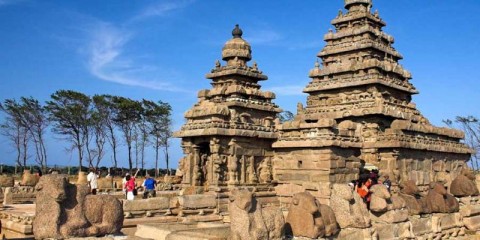
Tamil Nadu, South India, Beach, Boating, Caves, History, Musuem, Nature, Rock Cut Temples, Rock Formations, Temple, Water Sports
Mahabalipuram is an ancient historic town located in Kancheepuram district of Tamilnadu. Other names of this town are Mallapuram and Mamallapattana. Mahabalipuram means city of Great Bali. This place is famous for Stone temples and Stone Carvings. Almost all are built between 7th century and 9th century. Narashimhavarman, Pallava King played a major role in the development of this town during 17th century. Britishers established Modern Mahabalipuram in 1827. Vibrant fence festival is most famous in this town. Stone Sculptures are worth buying at this place.
What to see in Mahabalipuram:
Five Rathas: It is a rock cut temple. This is named after Pandavas in Mahabharata which was built in 7th century. Pallavas built this temple. Five Rathas consists of status of 5 brothers on Pandavas including their wife Draupadi.
Shore Temple: 3 temples are located here, two temples belong to Lord Shiva and one temple belongs to Lord Vishnu. These temples belong to 8th century. Pallavas had constructed these temples in Dravidian style. Granite was used to build the temples.
Mahabalipuram Beach: It is one of the major attractions of the city. Most popular activities in the beach are motor Boating, Surfing, Diving and Sunbathing. Near this beach rock cut temples and Monolithic Rathas can also be seen.
Mahishamardini Cave: It is located in Chingleput district of Mahabalipuram. These caves belong to 8th century and it was dedicated to Mother Goddess. In the centre of the cave major attraction are Carvings of Murugan, Parvati and Shiva.
Descent of the Ganges: It is the rock cut monument belongs to 7th century. This place is famous for open air rock sculptures and Carvings.
Arjuna Penance: This place is famous for the carvings belong to 7th and 8th centuries. Height of this penance is 9meters and 30 meters long. Carvings of this penance belong to animals, birds and Gods.
Trimurti Cave Temple: It is located near Ganesha Ratha. Idols of Shiva, Brahma and Vishnu are placed here. This is most ancient rock cut temple which was built in 7th century.
Krishna’s Butterball: It is a large rock balanced on the hill side. Diameter of this rock is around 5m.
Other places to visit in Mahabalipuram: Other places to visit in Mahabalipuram are Dakshinachitra, Mamallapuram Light House, Mumu Surf Shop, Sculpture museum, Ganesh Ratha Temple, Dharmaraja Cave, and Little Art Gallery.
What to see around Mahabalipuram:
Varaha Cave Temple: This place is famous for the sculptures of Earth Goddess, Holding Bhudevi, and Lord Vishnu. This temple is dedicated to Lord Varaha who is the incarnation of Lord Vishnu. It was built in 7th century which is 27kms away from the temple.
Tigers Cave: It is located 5kms away from Mahabalipuram. This is rock cut temple dedicated to Goddess Durga.
The Crocodile Bank: It is located 14kms away from Mahabalipuram. Snake Farm, African Alligators, Indian Alligators are major attractions of this place.
Thirukalukundram: This temple is dedicated to Lord Shiva. It is located 15kms away from Mahabalipuram. Inscriptions in ancient Indian, English and Dutch Languages can be seen here.
Getting to Mahabalipuram: Only way to reach this place is by road. From cities such as Chennai, Hyderabad, Bangalore, Kochi, Thiruvananthapuram, Delhi buses are available to reach this place. Nearest railway station is located at Chengalpattu which is 29kms away from Mahabalipuram. Nearest airport is Chennai International Airport.
Getting around Mahabalipuram: Mahabalipuram is a small town. All the places in the town are very near to each other. So, best way to see the places in Mahabalipuram is on foot. Taxis and buses are available to visit the places near Mahabalipuram.
Best time to visit Mahabalipuram: Best time to visit this place is between October to March.
Where to stay in Mahabalipuram: Plenty of hotels are available to stay in Mahabalipuram. As beach is located in this town resorts are also available to stay near the beach.
Where to eat in Mahabalipuram: Plenty of restaurants are available to eat in Mahabalipuram. Almost all the restaurants offer non vegetarian. Vegetarian food is available on demand.
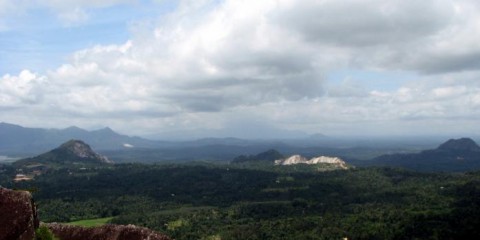
Kerala, South India, Boating, Caves, Hill station, Masjid, Mountian Biking, Musuem, Nature, River crossing, Valley, Water falls, Wildlife Sanctuary
Sultan Bathery is a town in Wayanad district of kerala. Earlier it was named as Sultan’s Battery. In Wayanad district this is the largest town. Town got this name after Tipu Sultan had stationed his battery of field guns, at the time of invaded Kerala. Climate is so cool and it is beautiful place with lush green hills. Spice plantation is most famous in this place. Wayand is the biggest shopping place in Sultan Bathery. Worth buying things in this town are home appliances, electronics, textiles, and agricultural appliances.
What to see in Sultan Bathery:
Sri Maha Ganapathy Temple: It is one of the main attractions of the town. This temple is dedicated to Lord Ganesha. Other shrines of this temple are Goddess Saraswathi, Lord Sri Nagar, Sri Sivan, and Sri Ayyappa.
Jain Temple: This temple was built in 13th century at Bangalore – Kozhikode highway. This temple is famous for beautiful Keralite architectural styles and carvings on the walls. It is dedicated to Lord Ananthanatha Swami.
What to see around Sultan Bathery:
Wayanad Wildlife sanctuary: It is 14kms away from the town. This sanctuary was established in 1973. Area covered by this sanctuary is 344.44 Sq.km. Major Attraction of this sanctuary are Wild dogs, Civets, Panthers, Jungle cats, Monkeys etc…
Agricultural Research station: It is located at Ambalavayal town which is 10kms away from the town. This conducts research on fruits, vegetables, paddy, and spices.
Edakkal Caves: These are considered as earliest human settlement on the planet. Length is 96feet and width is 22 feet.
Thovarimala Ezhuthupara: This place is famous for cave. It is considered as rare historic treasure. This place is located 5kms away from Sultan Bathery and it is located at Nenmeni.
Phantom Rock: This place is famous for skull shaped rock formation. It is popularly known as Cheengeri Mala. It is located 10kms away from the town.
Chethalayam Falls: These falls are located 41kms away from the town. Black granite stones are most famous in this place. Trekking activity takes place at this falls.
Ambalavayal Heritage Museum: It is located 10kms away from the town. Rare artifacts which belong to 2nd century are placed here.
St.Thomas Orthodox Church: It is located in Malankarakkunnu which is 11kms away from the town. Sultan Bathery Diocese is maintaining this church.
Kalpetta: It is located 24kms away from the town. This place is famous for Sanctuaries, valleys, waterfalls and huge number of temples.
Getting to Sultan Bathery: This place is well connected with road. From Karnataka and Kerala buses are available to reach Sultan Bathery. Nearest railway station and air port is located at Kozhikode which is 100kms away from the town.
Getting around Sultan Bathery: Buses and Taxis are available to visit the surrounding places of Sultan Bathery.
Best time to visit Sultan Bathery: Best time to visit this place is between October to March.
Where to stay in Sultan Bathery: Plenty of hotels can be seen in Sultan Bathery. Few resorts are also available to stay in Sultan Bathery.
Where to eat in Sultan Bathery: Huge number of restaurants is available to eat in Sultan Bathery. North Indian, South Indian and Chinese cuisines are available.
Kovalam is a beach town in Thiruvananthapuram City of Kerala. This is the oldest tourist centre. In the world Kovalam is having best beaches. Kovalam consists of 3 beaches. This is the best place for sunbathing. Along with sunbathing other activities such as cultural programs, herbal body massage, Catamaran Cruising and swimming are also available.
Shape of these beaches is like Crescents. This is the best picnic spot to spend the time more leisurely. Near the beach Maharani Lakshmi Bai built a palace to spend her honey moon and she want to spend private time with her consort Prince GV Raja. After seeing and spending few days GV Raja recognised that this place can be developed as tourists place so he invited Thomas Cook to develop this place. He is from United Kingdom.
What to see in Kovalam:
Samudra Beach: It is located on the northern part of Hawwah beach. This beach is mostly use by fisherman for fishing but this is not much developed as tourist centre.
Hawwah Beach: Hawwah beach is the 2nd largest beach in Kovalam. It is the first topless bathing beach. Now this was banned. Its popular name of Eve’s Beach. Sunbathing and Herbal massage is famous in this beach.
Light house Beach: In Kovalam, Lighthouse Beach is the largest beach.
The Lighthouse: It is located on the hillrock of Kurumkal. Due to this lighthouse, Kovalam beach is named as Lighthouse Beach. Height of this lighthouse is 30 meters.
Halcyon Castle: It is also known as Kovalam Palace. This was built by Maharani Lakshmi Bai who is the consort of MR Sri Rama Varma Valiya Koil Thampuran in 1932. This place used as summer resort by Lakshmi Bai.
What to see around Kovalam:
Aruvikkara: It is one of the nearby attractions of Kovalam which is 25kms away. This place is famous for Bhagavathi Temple. This temple is dedicated to Goddess Durga.
Vizhinjam Rock Cut Cave: It is located 1km away from Kovalam. In this place sculptures belong to 8th century can be seen.
Vellayani Lake: It is located 8kms away from Kovalam. In Thiruvananthapuram district this is the largest fresh water lake. Boat race is the main attraction of this lake.
Vizhinjam Marine Aquarium: It is located in Vizhinjam which is 5kms away from Kovalam. World’s rare species of ornamental fish and invertebrates can be seen here.
Karamana River: It is located 14kms away from Kovalam. On this river two dams are located. These are used for irrigation purpose.
Vizhinjam Fishing Harbour: Vizhinjam is the major sea port area. This is the commercial centre for Dutch, Portuguese and Europeans. It is located 5kms away from Kovalam.
Other places to visit nearby Kovalam: Other places to visit nearby Kovalam are Kovalam Jama Masjid, Vizhijam Vilage, Thiruvallam Parasuarama Temple, Valiathura Pier, Analothbhava Matha Church, and Government Agricultural College.
Getting to Kovalam: This place is well connected though roadways. From Thiruvananthapuram Junction plenty of buses are available to reach this place. From Chennai, Nagarcoil, Madurai, Bangalore huge number of buses are available to reach Thiruvananthapuram. Nearest railway station is at Thampanoor. Nearest airport is Thiruvananthapuram Airport.
Getting around Kovalam: Motorcycles, Atuos, Cabs, Private Vehicles are available to visit the surrounding places of Kovalam.
Best Time to visit Kovalam: Best time to visit this place is between September to March.
Where to stay in Kovalam: Plenty of accommodation facilities are available to stay in Kovalam. Budget hotels are available at Light House Beach. Near Hawwah Beach midrange hotels are available. At Light house beach and Chowara, luxury hotels are available.
Where to eat in Kovalam: Plenty of restaurants are available to eat in Kovalam. Both vegetarian and Non Vegetarian food are available. Famous foods in Kovalam are Fried Chicken, Chicken Fry. All varieties of Continental, North Indian, South Indian, Italian, Punjabi, and Chinese are available.
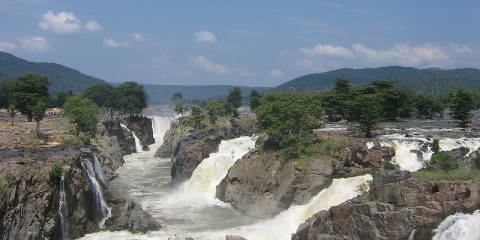
Tamil Nadu, South India, Boating, Caves, Hill station, Musuem, Temple, Trekking, Valley, Water falls, Wildlife Sanctuary
Yercaud is a hill station in Salem district of Tamilnadu state. Yercaud is derived from 2 names Yeri and Kaadu. Yeri Means Lake and Kaadu means Forest. This is located 1515meters above the sea level. Other name of Yercaud is Jewel of the destination. As it is less commercialised place, this is also known as Poor Man’s Ooty. Servarayan Range is the highest peak in Yercaud. This place is famous for orange groves and coffee plantation. On this hill station large variety of rare plants can be seen. This hill is a home town to several wild animals. Few animals are Swallow, Kite, Sparrow, Snake, Partridge, Mongoose etc…
What to see in Yercaud:
Yercaud Lake: Trees and Gardens are surrounded to Yercaud Lake. Boating is the major attraction in this lake.
Bear’s cave: It is located in the private coffee estate.These caves are situated 7 feet below the ground level. Visitors can see this while they were reaching to Servarayan Temple.
National Orchidarium and Botanical Gardens: This is third largest Orchidarium in India. In this garden more than 4000 species of plants can be seen. Apart from these varieties, huge varieties of orchids are also most attractive in this garden. It was established in 1963.
Pagoda Point: To form a pyramid shape 4 pills are arranged in this place. Local tribes built this place. Now Rama Temple can be seen here. Best time to see this place is during the night times or in the early morning hours.
Silk Farm: These farms explain about how silk garments manufactured. Entire life cycle of silk worms can be seen here.
Lady’s Seat: This is rock in the form of seat. Other attractions near this place are Children Seat and Gent’s seat.
Fairholme Cottage: Earlier this was a Colonial bungalow but now it is converted into Hotel.
What to see around Yercaud:
Kiliyur Falls: Trekking is the major attraction in these falls. It is located 3kms away from Yercaud.
Servarayan Temple: Lord Servarayan and Goddess Parvati are worshipped in this temple. Temple is located on Servarayan Hill which is 6kms away from Yercaud. This temple is narrow dark cave.
Anna Park: It is located just 1km away from Yercaud. This is most attractive place for the children. Inside the park Japanese Garden is located.
Namakkal: Major attractions in this place are fort on the hillock and rock cut cave temples. Temples belongs to Narashimhasway and Ranganathaswamy. In the Ranganathaswamy temple, huge Hanuman statue is worth seeing which 20feet height.
Salem: It is located 28kms away from Yercaud. Plenty of industries and temples are located here.
The Grange: It is located just 1km away from Yercaud. This was used as a summer resort by Robert Clive of East India Company. It was built by MD Cockburn in 1820.
Getting to Yercaud: Only way to reach this place is though Roadway. From the cities such as Salem, Chennai buses are available to reach this place. Nearest railway station is Salem Junction which is 30kms away from Yercaud. Trichy Airport is the nearest airport to Yercaud which is 163kms from Yercaud.
Getting around Yercaud: Cycles, Cars, Autos and cabs are available to visit the places surrounding to Yercaud.
Best time to visit Yercaud: Best time to visit this place is between May to October.
Where to stay in Yercaud: Budget, midrange and luxury hotels are available to stay in Yercaud. But there are very limited. Few guesthouses are available to stay. These are maintaining by Christian Missionaries
Where to eat in Yercaud: Limited restaurants are available but all the restaurants serve both vegetarian and non vegetarian food. Most famous food is Mutta Bonda, Fried Dumplings Egg, and Mulaga Bhajji.
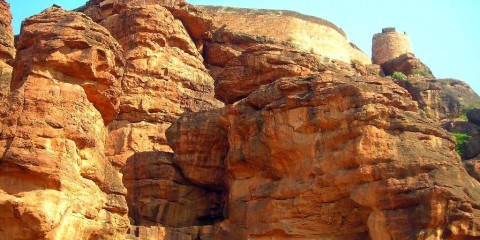
Karnataka, South India, Caves, Fort, History, Mountian Biking, Musuem, Nature, Temple, Trekking, Valley, Water falls
Badami is a town in Bagalkot district of Karnakata. This place is famous for Structural temples and rock cut temples. Cave Temples were built from 5th to 8th centuries. Vatapi and Ilvala hills surround this town. Earlier name of Badami is Vatapi. This town acted as capital of Chalukyas. From 6th century to 8th century this region was ruled by Chalukyas. Almost all the cave temples are built by Mangalesha I and Kirthivarman who were the sons of Pulakesi. Only 4 rock temples were constructed during the reign of Chalukyas. Out of these 4 rock temple, 3 are dedicated to Hindu Gods and remaining temple is dedicated to Jain Tirthankars. Cave Exploration, Trekking and Rock Climbing are famous activities in Badami.
What to see in Badami:
Badami Fort: This is famous for two Shivalayam complexes. Upper one is dedicated to Lord Shiva and lower one is dedicated to Lord Ganesha.
Cave Temples: Major attraction of Badami is Cave temples. Each cave temple is dedicated to one Hindu God. In the First cave temple dancing postures of Lord Shiva with 18 arms are most attractive in this temple. Painting of Goddess Parvati can also be seen here. This temple is dedicated to Lord Shiva. Third cave temple is famous for the carving of Lord Vishnu as this temple was dedicated to Lord Vishnu. Third temple is famous for the carvings of different avatars of Lord Vishnu. Fourth temple is famous for the carvings of Parshavnath. This is dedicated to Jain Tirthankar.
Agastya Lake: All the caves located in the town are facings towards the lake. Temples and hills are located around the lake.
Bhoothnatha Temple: This temple is dedicated to Lord Bhoothnath incarnation of Lord Shiva. Local Sandstone is used to construct this temple. Beautiful sculptures of avatars of Vishnu and Jain figures can be seen here.
Archaeological Museum: 4 Galleries are appeared here. Two are open air galleries. Main attractions of this museum are stone equipments and prehistoric sculptures.
What to see around Badami:
Sangameshvara Temple: It is the oldest temple in Pattadakal which is located 22kms away from Badami. Major attraction of this temple is Nataraja and Ugranarasimha. This was built by Chalukya King.
Virupaksha Temple: This is located in Pattadakal which is 22kms away from Badami. After Vikramaditya won in the war against Pallavas, Vikramaditya’s wife expressed her happiness by construed this temple. Major attractions of this temple are Sculptures of Lingodhbhava, Ravananugraha, Nataraja, and Ugranarasimha.
Ravana Phadi Cave: This was built in 6th century. It is the oldest rock cut temple. Carved pillars are major attraction of the temple. It is located 35kms away from Badami.
Lad Khan Temple: It is located 35kms away from Badami. It is the oldest temple constructed by Chalukya Kings in 5th century. This temple is dedicated to Lord Shiva.
Durga Temple: It is located in Aihole which is 35kms away from Badami. This was constructed in 7th century.
Getting to Badami: This place is well connected with Roadways. From cities such as Bidar, Bangalore, Bijapur buses are available. Nearest railway station is located at Hubli which is 100kms away from Badami. Belgium is the nearest airport.
Getting around Badami: Tango’s, buses, autos are available to visit the places surrounding Badami.
Best time to visit Badami: Best time to visit this place is between October to March.
Where to stay in Badami: Plenty of accommodations are available starting from budget hotels to luxury hotels. Best hotels in Badami are Hotel Mookambika Deluxe, The Heritage Resort, Hotel New Satkar Deluxe, Hotel Mayura Chalukya, and Rajsangam International Hotel.
Where to eat in Badami: Plenty of restaurants are available. South Indian, Continental, North Indian cuisines are available to eat. Huge variety of snacks, Chutneys and rice dishes are famous in Badami.
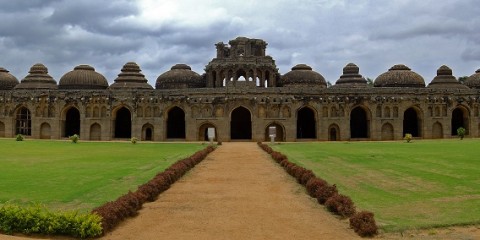
Karnataka, South India, Caves, Fort, Hill station, History, Musuem, Nature, Temple, Trekking, Wildlife Sanctuary
Hampi Attractions : Virupaksha Temple, Lakshmi Narasimha Temple, Hazara Ram Temple, Museum, Matanga Hills,Hemakuta Hill Temple Complex
Hampi is a small town in Karnataka. Other name of this town is Pampa. This name is derived from the river Pampa who is the daughter of Lord Brahma. Earlier it was the capital of Vijayanagar Empire. Several dynasties ruled this town. Main dynasties are Aravidu, Tuluva, Saluva and Sangama. During the Vijayanagar kingdom diamonds were sold on the streets. Name of that street is Pan Supari Street. Silver and Gold used as currencies. Most famous festival celebrates in Hampi is Hampi Utsav or Vijaya Utsav.
What to see in Hampi:
Virupaksha Temple: This temple is dedicated to Lord Shiva. According to Hindu Mythology, Lord Shiva and Pampa got married here. Gopuram of this temple is 50 meters high. It is located on the banks of river Tungabhadra. This temple was built in 7th century. This is the major attraction of Hampi.
Lakshmi Narasimha Temple: There is no idol inside the temple. Based on the architecture it is considered that this temple belongs to Jains. However Carvings of Goddess Lakshmi, Lord Vishnu and Hanuman can be seen on the walls of the temple.
Hazara Ram Temple: On the walls of this temple episodes of Ramayana can be seen. This is one of the small and cute temples in Hampi.
Museum: It is one of the attractions of Hampi. It was divided into 4 parts. They are Hampi’s Ancient culture, Royal remains, daily used things of ancient Hampi People and Models.
Vijaya Vittala Temple: This temple is famous for rich architectural style. It was built in 15th century.
Matanga Hills: On this hill several temple are located. For the trekking lovers this is the best place in Hampi.
Monkey temple: It is located on Anjanadri Hills. This is a small concrete structure. It is believed that it was the birth place of Sri Hanuman.
Other attractions in Hampi: Other attractions in Hampi are Queen’s Bath, Vithala Temple Complex, Hampi Bazar, Balakrishna Temple, and Hemakuta Hill Temple Complex.
What to see around Hampi:
Lotus Temple / Lotus Palace: It is located 3kms away from Hampi. It is two stored building used by Royal ladies. Lotus Bud is carved on its dome so it is named as Lotus temple. This was built in Indo Islamic architectural style.
Mahanavami Dibba: This is the tallest structure. Two stair cases have to climb to the top of this structure. Beautiful Carvings of Horses, Elephants and other carvings can be seen.
Zenance Enclosure: There are 4 structures inside the enclosure. Queen’s Palace is the largest enclosure of all the 4 enclosure. This is specially meant for Royal Women. It is located 3kms away from Hampi.
Elephant Stables: It is located 3kms away from Hampi. There are 11 domed tall chambers. This is specially meant for Royal Elephants.
Other places to visit around Hampi: Other places to visit the places around Hampi are Daroji Bear Sanctuary, Badami Fort, and Badami Cave Temples.
Getting to Hampi: Only way to reach this place is Roadways. From Gokarna, Bangalore buses are available to reach Hampi. Nearest railway station is located at Hospet. Nearest airport is at Bellary.
Getting around Hampi: Best way to see all the places in Hampi is on foot. Autos and Taxis are available to visit the surrounding places of Hampi.
Best time to visit Hampi: Best time to visit this place is between October to December.
Where to stay in Hampi: Plenty of accommodation is available to stay. Budget and Midrange accommodations are available. Cottages with all the modern amenities are also available.
Where to eat in Hampi: Plenty of restaurants are available to eat in Hampi but only vegetarian and local food is available. Famous snacks of this place are Sandwiches and Burgers.
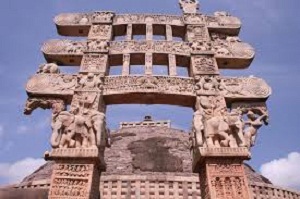
MP, Central India, Buddhist Monestery, Buddhist Stupas, Buddhist temples, Caves, History, Musuem, Nature, Temple
Sanchi is a small village in Raisen district of Madhya Pradesh. Sanchi is derived from Pali Word Sanch which means to measure. This place is most famous for oldest stone structure in India i.e. The Great Stupa. This was built by Ashoka in 3rd century BC. In this place several Buddhist Monuments, stupas, Pillars, Monasteries are most attractive. Richest carvings on the stupas are most attractive in Sanchi. Earlier name of Sanchi is Vidishanagar.
What to see in Sanchi:
Sanchi Museum: This is an archaeological museum. Large number of ancient artefacts can be seen here. Ashokan Pillars, Metal objects used by monks are preserved in this museum. Almost all the items belong to 1st and 3rd centuries.
Ashoka Pillar: It is located near Great stupa. This pillar is beautifully carved in Greco Buddhist Style. This Pillar looks like Sarnath Pillar. Only difference is that here the lions do not have Dharmachakra.
Great Stupa: Major attraction in Sanchi is Stupas. These stupas are dome shaped hemispherical structure. Stupas are oldest structure in India. One of the stupa is Great Stupa. Its height is 16.4m and its diameter is 36.5meters. This is considered as Stupa No.1.
Stupa No.2: This is surrounding with stone wall. Decorations on the stupa makes the stupa most attractive. There are no gateways to this stupa. It was constructed in 2nd century.
Stupa No.3: Shrines of Sariputta, Mahamogellena and Buddha can be seen inside the Stupa.
Gupta Temple: This place is best example for the traditions of ancient India. It was built in 5th century.
Toranas/ Four Gateways: Great stupa is surrounded by 4 gateways. This is also known as Toranas. They are named as Western, Eastern, Northern, Sothern gateways.
The Great Bowl: It is used to distribute food to the monks. This bowl is made out of the single stone.
What to see around Sanchi:
Vidisha: It is located 10kms away from Sanchi. Most attractive place for the tourists is Udaygiri Caves. Other places to visit in Vidisha are Bijamandal, Lohang Pir, and Helidorus Pillars.
Bhopal: Bhopal is known as city of lakes. Best places to visit in Bhopal are Taj-ul-Masjid, Upper Lake, Lower Lake, Bharat Bhawan, Van Vihar Park, Birla Museum, and Archaeological Museum. It is located 48kms away from Sanchi.
Bhimbetka: This place is famous for horse and elephant ride, household scenes, animal fighting’s, music, dancing and hunting. In the caves of Bhimbetka Wild boars, lions, tigers, bisons etc can be seen. It is located 89kms away from Sanchi.
Getting to Sanchi: This place is well connected to Bhopal through road ways. Best option to reach this place is hiring private taxis. Nearest railway stations are Bhopal and Vidhisha. Nearest airport is Raja Bhoj Airport at Bhopal.
Getting around Sanchi: Walking is the best option to enjoy the nature and places to see in Sanchi. Buses are available to visit the places around Sanchi.
Best time to visit Sanchi: Best time to visit this place is between October to March. During November large number of visitors comes to this place. At that time Chethiyagiri Vihara festival celebrates very grandly.
Where to stay in Sanchi: Only option to stay is MP tourism hotels and lodges. Most of the people prefer to stay in Bhopal.
Where to eat in Sanchi: Limited restaurants are available. Continental, Chinese, South Indian and North Indian food is available in all the restaurants.
Mandu is located in Dhar district of Madhya Pradesh. This is a beautiful place with Palaces, crafted Pavilions and the lakes. Mandu was founded by Parmar rulers in 11th century. People believe that this place is resembled the love and affection of Prince Baz Bahadur and Rani Roopmati. Beautiful rock cut caves attracts the tourist. Excellent paintings can be seen on the walls of the caves. Shopping lovers can buy best things from Mandu are fabrics, colourful textiles, showpieces, wall pieces, gift items, Home decors.
What to see in Mandu:
Jahaz Mahal / Ship Palace: It is situated between 2 artificial lakes. This palace is in elephant shape which consists of 3 large halls with excellent bath. It was constructed in 15th century. Stones and colored tiles in the palace are most attractive.
Rupayan Museum: This consists of tools and crafts which are used by the ancient Mandu People.
ASI Museum: Large Statue of Thirthankar is the major attraction in this museum. Large number of Hindu sculptures which belongs to 11th and 12th century can be seen here.
Jal Mahal: This is also known as Water Mahal. It was built for the private escape of royal couples.
Jami Masjid: This is the best construction during Ghauri dynasty. It was constructed with several monuments and red sandstones.
Champa Boali: It was a wide construction. It is believed that water in the well which is situated here smells like Champa Flower. Under rooms are more attractive. This place acted as summer recreation to the kings.
Tomb of Hoshang Shah: This is a unique tomb and it is India’s first marble edifice. It is the best example for Afghan architecture. Beautiful towers, Porticoed courts, marble work, proportioned dome are most beautiful.
Rupmati Pavilion: It was actually built for the army post but this was used as recreation place by Rani Roopamati.
Jain Temple: Images of plenty of Jain Thirthankars are placed here. All are made up of Gold, Silver and Marble.
Hindola Mahal / Swing Palace: Due to sloping sidewalls this mahal is named as Hindola Mahal. It is T Shaped structure which was built in 1425 by Hoshang Shah.
Other Attractions : Other attractions in Mandu are Darya Khan’ s Tomb, Dai Ka Mahal, Rewa Kund, Dilwar Khan’s Mosque, Nilkanth Mahal, Darwazes, Shri Mandavgarh Teerth.
What to see around Mandu:
Baz Bahadur Palace: It is located 4kms away from Mandu. This beautiful Palace was built by last king of Malwa. Spacious Patios, ornate halls, high terrace, Rajasthani and Mughal architectural style are most attractive.
Bagh Caves: These are Buddhist caves belong to 400 AD to 700 AD. It is situated 50kms away from Mandu.
Getting to Mandu: Mandu is well connected with roadways. From other cities such as Bhopal, Ujjain, Ratlam, Dhar buses are available frequently to reach Mandu. Nearest railway station is Ratlam which is 124kms away from Mandu. Nearest airport is at Indore.
Getting around Mandu: To see all the sities in Mandu hiring cycles, scooters, Bikes is the best option. One can enjoy these rides. Tempos, Autos are available to visit the surrounding places of Mandu.
Best time to visit Mandu: During the monsoon season climate in Mandu is so pleasant. Monsoon season is between July to September. This is the best time to visit this place.
Where to stay in Mandu: Plenty of accommodation facilities are available to stay in Mandu. All range of hotels starting from budget to luxurious hotels is available.
Where to eat in Mandu: Most famous dishes in Mandu are Malpua, Khoprapak, Mawa Bati, Bhuttle Ki Kees, Kebabs, Mandu Ki Imli. Plenty of restaurants serve local, Chinese, South Indian cuisines but only vegetarian food.
Vidisha is the administrative headquarters of Vidisha district in Madhya Pradesh. During the medieval period this Vidisha is known as Bhilsa. Most attractive place for the tourists is Udaygiri Caves. Earlier name of Vidisha place was Besnagar. In the 3rd century this place dominated by Mauryans. Besnagar was destroyed during 7th century. After that Vidisha came into existence. This place is famous for historical monuments.
What to see in Vidisha:
Bijamandal: This was established in Paramara Period. It is unfinished temple. Unfinished architecture and carved niches can be seen in this place.
Lohang Pir: Shayak Jalal Chishti tomb is placed here. This rock structure tomb is known as Lohang Pir. Lohang Pir is dates back to 1460 BC. Now Annapurna temple was constructed here.
Helidorus Pillars: These pillars are popularly known as Khamba Baba. It is named after Greek ambassador Helidorus. He invented this place during 2nd century BC. Local fisherman worshipped this pillar. This pillar is dedicated to Lord Krishna. Sculptures of Garuda are most famous here.
Udaygiri Caves: Vidisha is famous for these caves. In total there are 14 caves. These caves are famous for architectural structures. War sculpture of God Skanda along with excellent architectures can be seen in Cave 3. Carved Shiva Lingam is famous in Cave 4. In Cave 5, Lord Vishnu and Varaha incarnation are most attractive to see here. Images of Goddess Durga, Lord Ganesha, Siva Gangadhara, and Lord Vishnu are located in Cave 6. Lord Vishnu sculptures are most attractive in Cave 13. All the caves are worth seeing for architectural splendours.
What to see around Vidisha:
The Great Bowl: It is used to distribute food to the monks. This bowl is made out of the single stone. It is located 68 kms away from Vidisha.
Bajramath Temple: In this temple 3 shrines of Jain Idols can be seen here. This place is located in Gyaraspur Tehsil which is 40kms away from Vidisha.
Sanchi: It is situated 10 kms away from Vidisha. This place is most sacred for Buddhist religion people. 3rd and 12th century monuments can be seen here. 3 stupas in Sanchi are most famous. These are oldest stupas in India.
Getting to Vidisha: This place is well connected with road ways and railways. Buses to this place are so rush. Taxis are the best option to visit this place. From places such as Bhopal, Varanasi, Amritsar, Chennai, Mumbai, Delhi trains are available. Nearest airport is at Bhopal which is 56 kms away from Vidisha. Bhopal is well connected through airlines from different places such as Chennai, Indore, Delhi, Hyderabad, and Mumbai.
Getting around Vidisha: Tempos and Tangos are available to see Udaygiri caves. Surrounding places can visit by taxis and autos.
Best time to visit Vidisha: Knowing climatic conditions before visiting any place is essential for the tourists to avoid inconvenience. Between October to March temperature is so pleasant in Vidisha. So it is considered as the best time to visit this place.
Where to stay in Vidisha: Very limited places are available to stay in Vidisha. Only budget hotels are available. Due to this most of the tourists prefer to stay in Bhopal. Best hotels in Vidisha are Suraksha Hotel and Sharad Lodge.
Where to eat in Vidisha: Very limited places to eat in Vidhisha. Fancy restaurants cannot be seen here. Chhole, Puri Sabzi are most famous here.
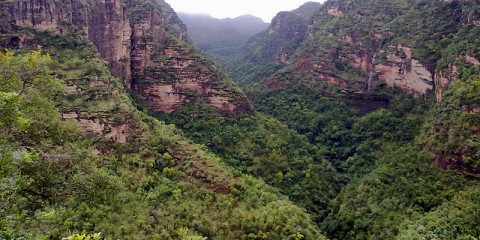
MP, Central India, Caves, Hill station, History, Nature, Temple, Valley, Water falls, Wildlife Sanctuary
Pachmarhi is a hill station in Central India. This place is also known as Queen of Satpura Ranges. It is an important cantonment area for the army people. Pachmarhi is famous for temples, ancient caves, surging waterfalls, Thick cover of greenery. Highest trekking point is Dhupgarh. This place is located in Pachmarhi. Near Pachmarhi visitors can enjoy dense sal forest, Jamun Orchards and peaceful forest basins. Artifacts belongs to 8000 BC are located here. This is a famous honeymoon spot for the honeymoon couple. Shivrathri is most famous festival here. At Mahadeo Caves, a fair conducts during Mahashivrathri. Lakhs of tourists come to see this fair.
What to see in Pachmarhi:
Waterfalls: This place is famous for plenty of waterfalls. Silver falls, Duchess Falls, Vanshree Vihar falls, Apsara Vihar, Bees falls are most famous in Pachmarhi.
Mahadeo Hills: This place is famous for the temples of Lord Shiva.
Pandava Caves: It is believed that this is the residence place of Pandavas. These are carved with sandstone rock. 5 caves are located here. Out of 5 caves Draupatdi Kuti is most ventilated and cleanest cave.
Jata Shankar Cave: Inside this cave there are 108 originally formed Lingas can be seen by the visitors. It is believed that in this caves Lord Shiva hide himself due to the fear of demo Bhasmasura.
Dhoopgarh: In the Satpura mountain ranges it is the highest peak. Sunset is most attractive in this place.
Christ Church: This was built in 1875 by the Britishers. Faces of angles on the walls are most attractive.
Other places to visit: Other Places to visit in Pachmarhi are Bison Lodge, Priyadarshini Point, Irene Pool, Lanjee giri, Bade Mahadev, Gupt Mahadev Cave Temple.
What to see around Pachmarhi:
Satpura National Park: It is located on the Satpura hills. It was established in 1981. Plenty of birds and animals are seen here.
Mahadeo Temple: It is located in Satpura Tiger reserves. Along with Bada Mahadeo temple, Gupt Mahadeo temples are also located here. It is located 10 kms away from the Pachmarhi. Visitors have to walk through the forest to reach this place.
Chauragarh: It is located 11 kms away from Pachmarchi. This place is famous for Lord Shiva Temple. Devotees climb this hill having trishul on their hands.
Handi Khoh: It is believed that this place consists of lake till Lord Shiva battle with evil snake. This snake got killed in that battle. After that battle lake become dried. It is believed that still this place is surrounded by evil snake. It is located 4 kms away from Pachmarhi.
Getting to Pachmarhi: Pachmarhi is well connected with road ways. From Bhopal, Pipariya, Chhindwara, plenty of buses are available to reach Pachmarhi. Nearest railway station is located at Pipariya which is 47 kms away from Pachmarhi. From several cities such as Howrah, Surat, Chennai, Bangalore, Delhi plenty of trains reach to Pipariya. Nearest airport is at Bhopal.
Getting around Pachmarhi: Buses and jeeps are available to visit the surrounding places of Pachmarhi. As it is hill station if visitors want to enjoy the nature, cycles will be given for rent for sightseeing.
Best Places to visit Pachmarhi: Best time to visit this place is between September to May.
Where to stay in Pachmarhi: Budget, midrange and luxury hotels are available to stay in Pachmarchi. But only limited accommodation is available. Certain rest houses provided by state government.
Where to eat in Pachmarhi: Only limited options are available. This place is famous for street food. Chinese and Indian cuisine is available.

Architecture, Buddhist Monestery, Caves, Rock Cut Temples

Architecture, Boating, Caves, History, Jyothirlinga, Mahabharata, Shakti peethas, Temple

Architecture, Caves, History, Jyothirlinga, Temple, Wildlife Sanctuary

Boating, Caves, History, Island, Mahabharata, Temple

Caves, Fort, History, Hot Springs, Musuem, Nature, Temple, Valley, Wildlife Sanctuary

Buddhist Monestery, Buddhist Stupas, Buddhist temples, Caves, History, Nature, Temple, Trekking

Buddhist Monestery, Buddhist Stupas, Buddhist temples, Caves, Nature

Buddhist Monestery, Buddhist Stupas, Caves, History, Nature, Trekking

Caves, History, Musuem, Nature, Shakti peethas, Temple, Trekking, Valley, Wildlife Sanctuary

Caves, Hill Station, History, Hot Springs, Musuem, Nature, Tea Garden, Temple, Trekking, Valley, Water falls

Caves, Hill Station, History, Tea Garden, Temple, Trekking, Valley, Wildlife Sanctuary

Architecture, Caves, Hill Station, History, Musuem, Nature, Temple, Wildlife Sanctuary

Boating, Caves, Fort, Hill Station, History, Musuem, Nature, Rock Formations, Temple, Trekking, Wildlife Sanctuary

Architecture, Bundi Utsav, Caves, Fort, History, Miniature Paintings, Palace, Water falls

Caves, Fort, Hill Station, Nature, Temple, Trekking, Valley, Water falls, Water Sports

Caves, Hill Station, Musuem, Nature, Temple, Trekking, Valley, Water falls, Wildlife Sanctuary

Caves, Hill Station, Musuem, Naga Tribes, Nature, Trekking, Valley, Water falls, Wildlife Sanctuary

Boating, Caves, History, Musuem, Nature, Rock Formations, Temple, Valley, Water falls, Wildlife Sanctuary

Beach, Boating, Caves, Mud Valcanoes, Nature, Wildlife Sanctuary

Caves, History, Jehanabad, Nature, Rock Formations

Boating, Caves, Fort, History, Musuem, Nature, Temple, Trekking

Boating, Caves, Hill Station, History, Musuem, Nature, Temple, Valley, Water falls, Wildlife Sanctuary

Boating, Caves, Fort, History, Jyothirlinga, Nature, Temple

Beach, Boating, Caves, History, Musuem, Nature, Rock Cut Temples, Rock Formations, Temple, Water Sports

Boating, Caves, Hill Station, Masjid, Mountian Biking, Musuem, Nature, River crossing, Valley, Water falls, Wildlife Sanctuary

Boating, Caves, Musuem, Nature, Temple

Boating, Caves, Hill Station, Musuem, Tomb, Trekking, Valley, Water falls, Wildlife Sanctuary

Caves, Fort, History, Mountian Biking, Musuem, Nature, Temple, Trekking, Valley, Water falls

Caves, Fort, Hill Station, History, Musuem, Nature, Temple, Trekking, Wildlife Sanctuary

Buddhist Monestery, Buddhist Stupas, Buddhist temples, Caves, History, Musuem, Temple

Caves, Fort, History, Masjid, Musuem, Nature, Temple

Caves, History, Nature, Temple

Caves, Hill Station, History, Nature, Temple, Valley, Water falls, Wildlife Sanctuary
